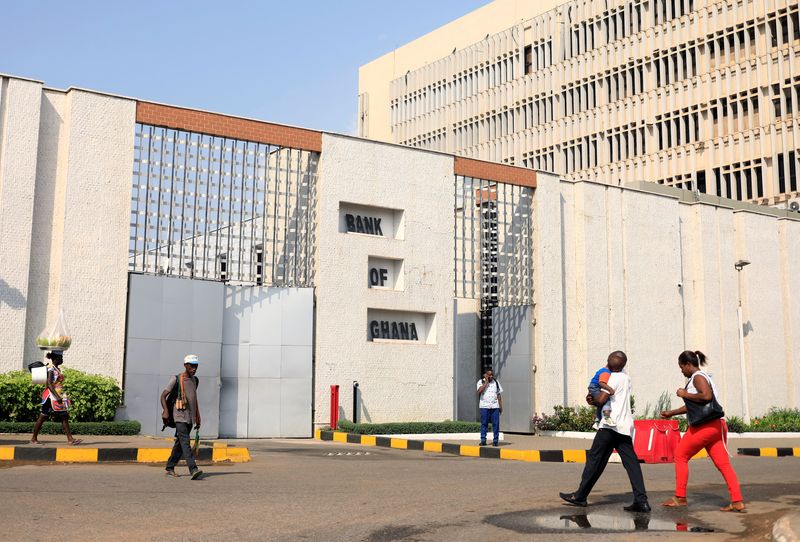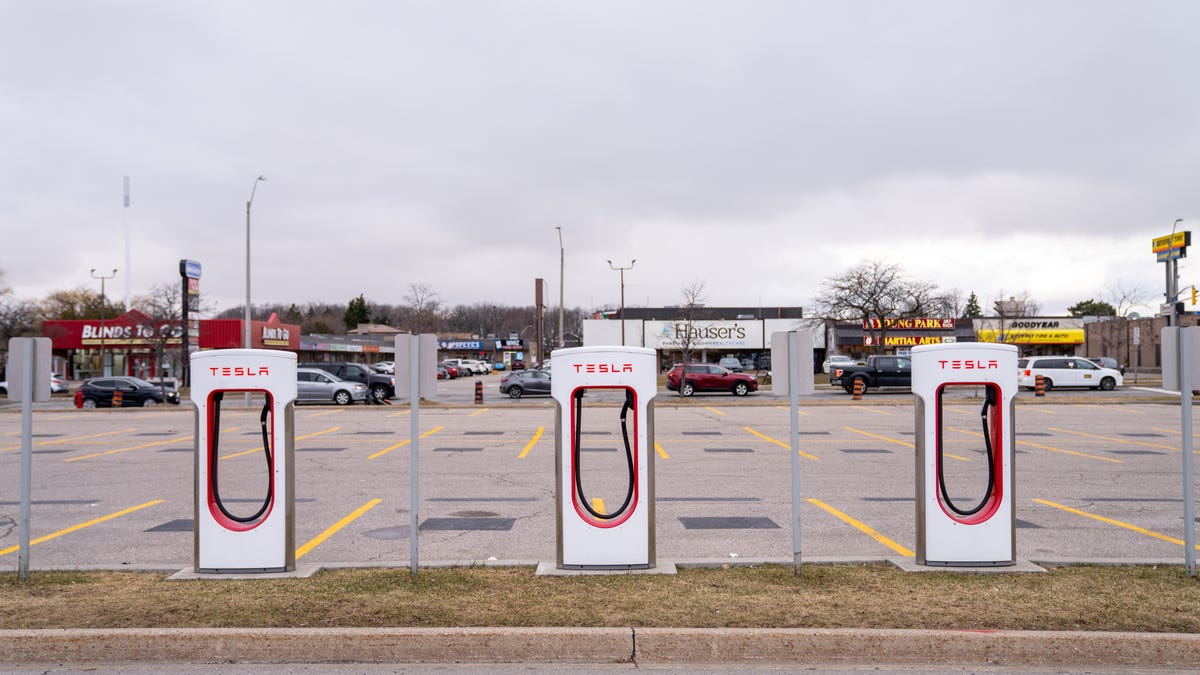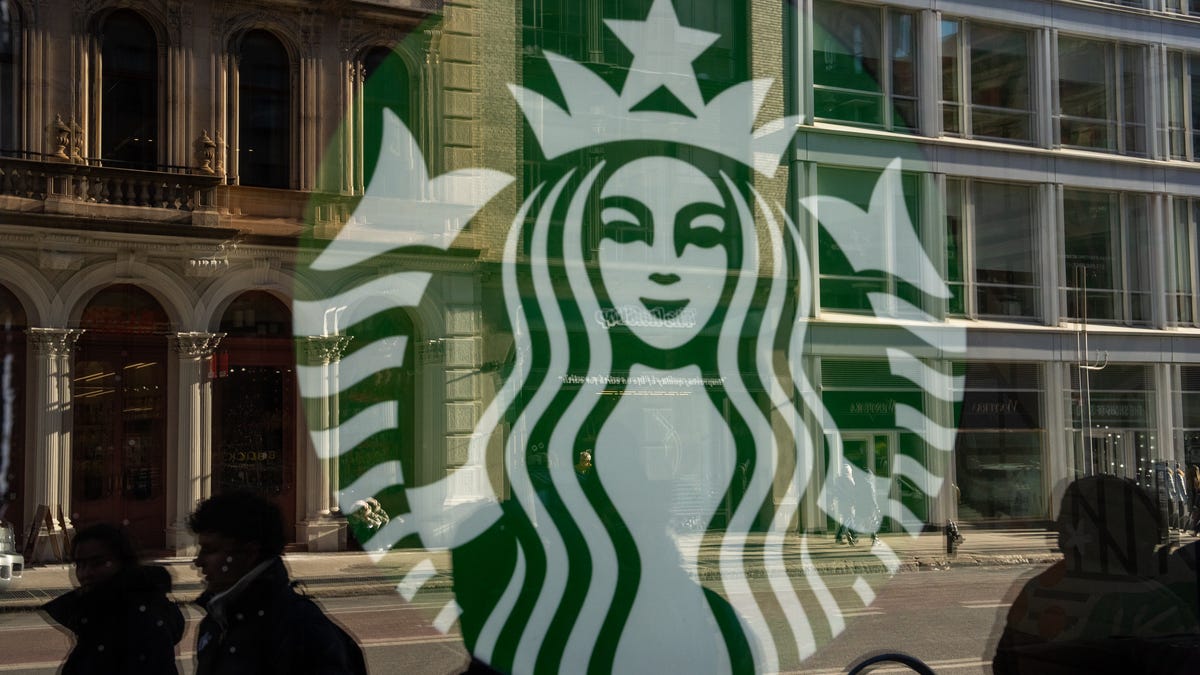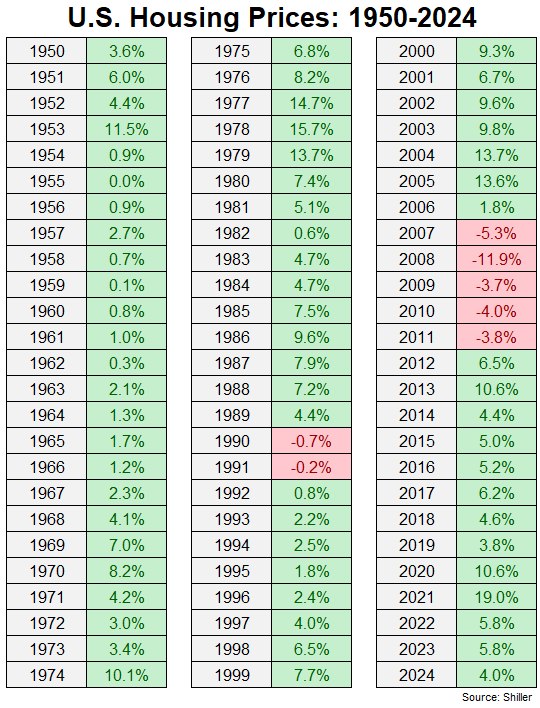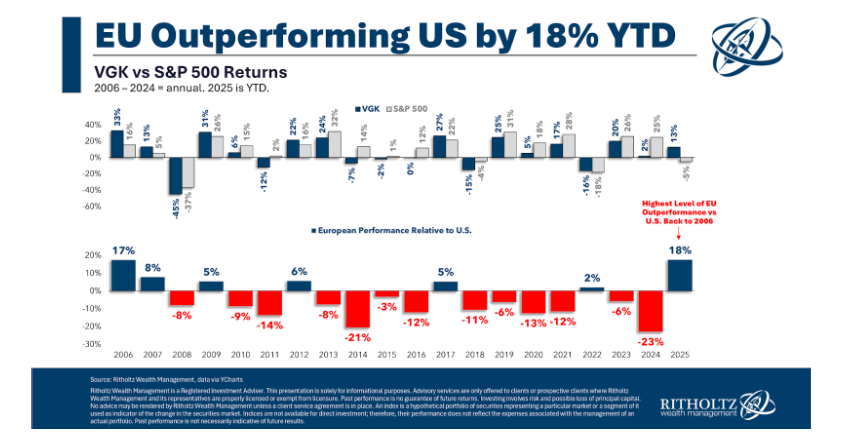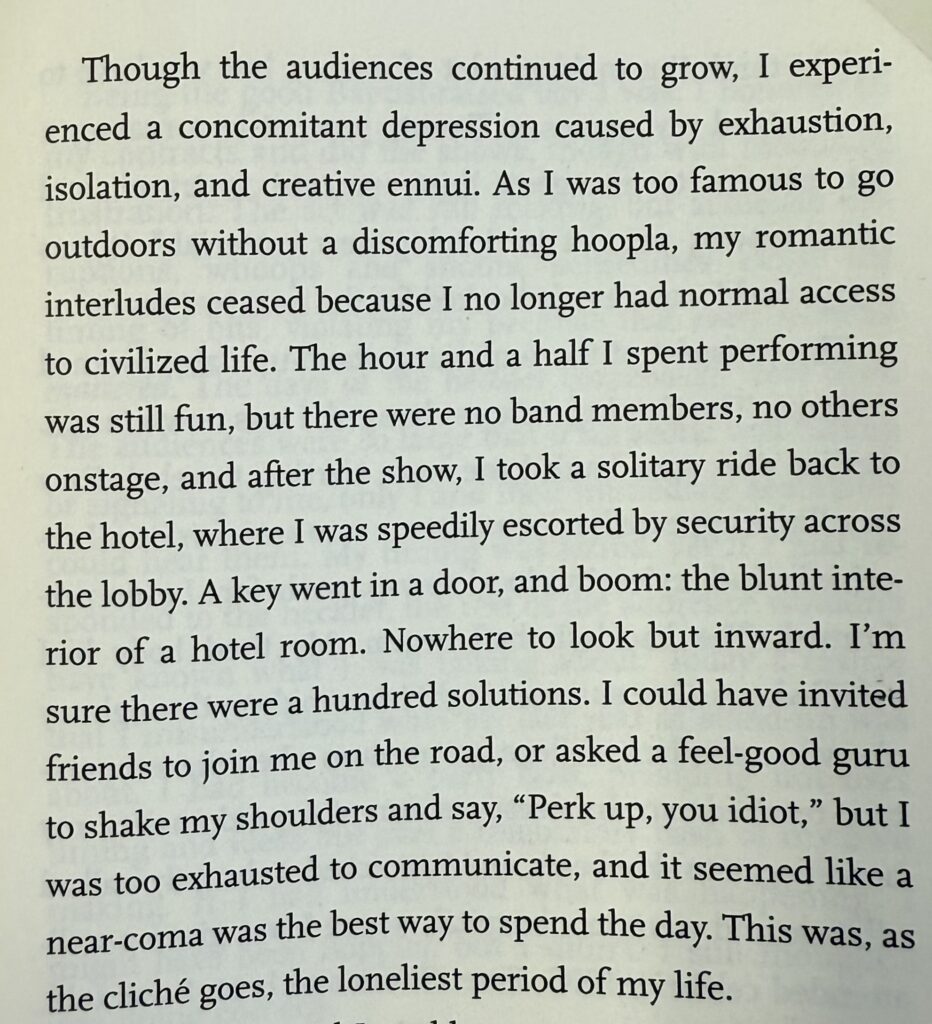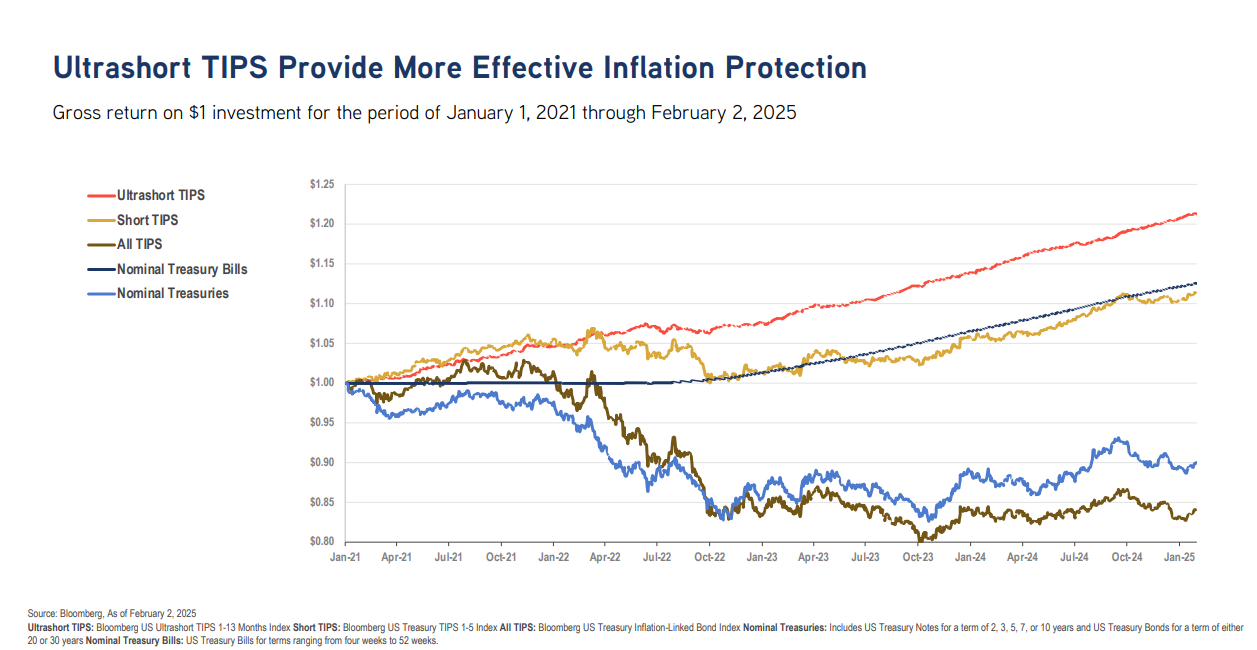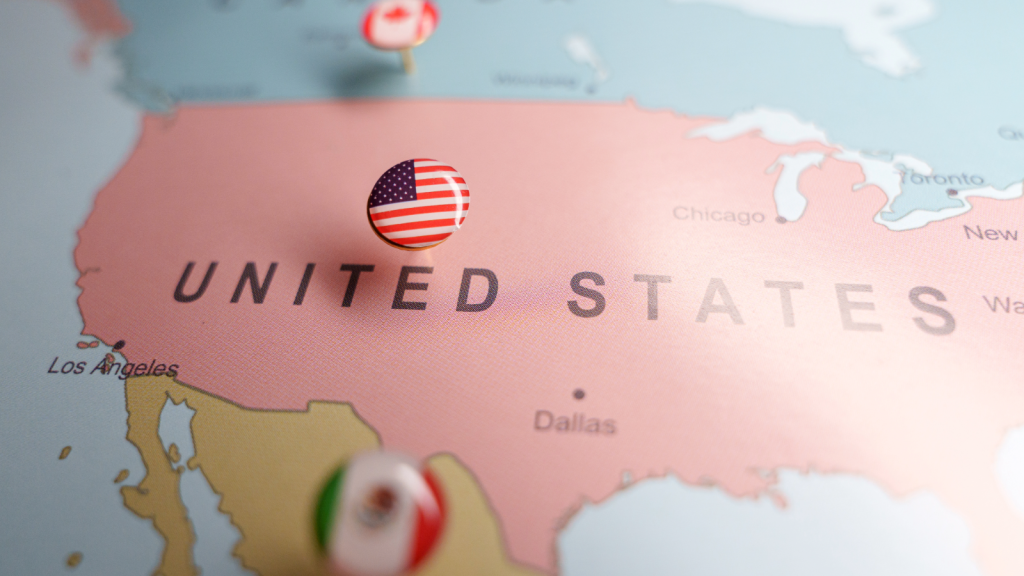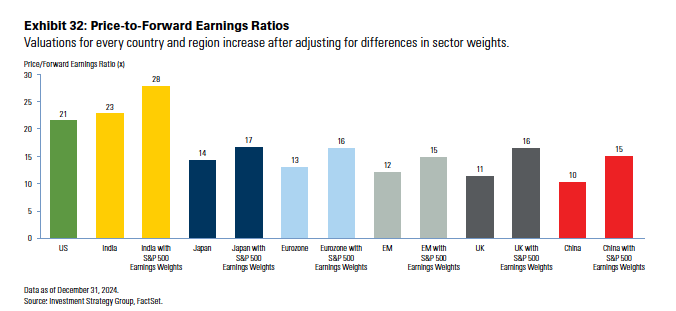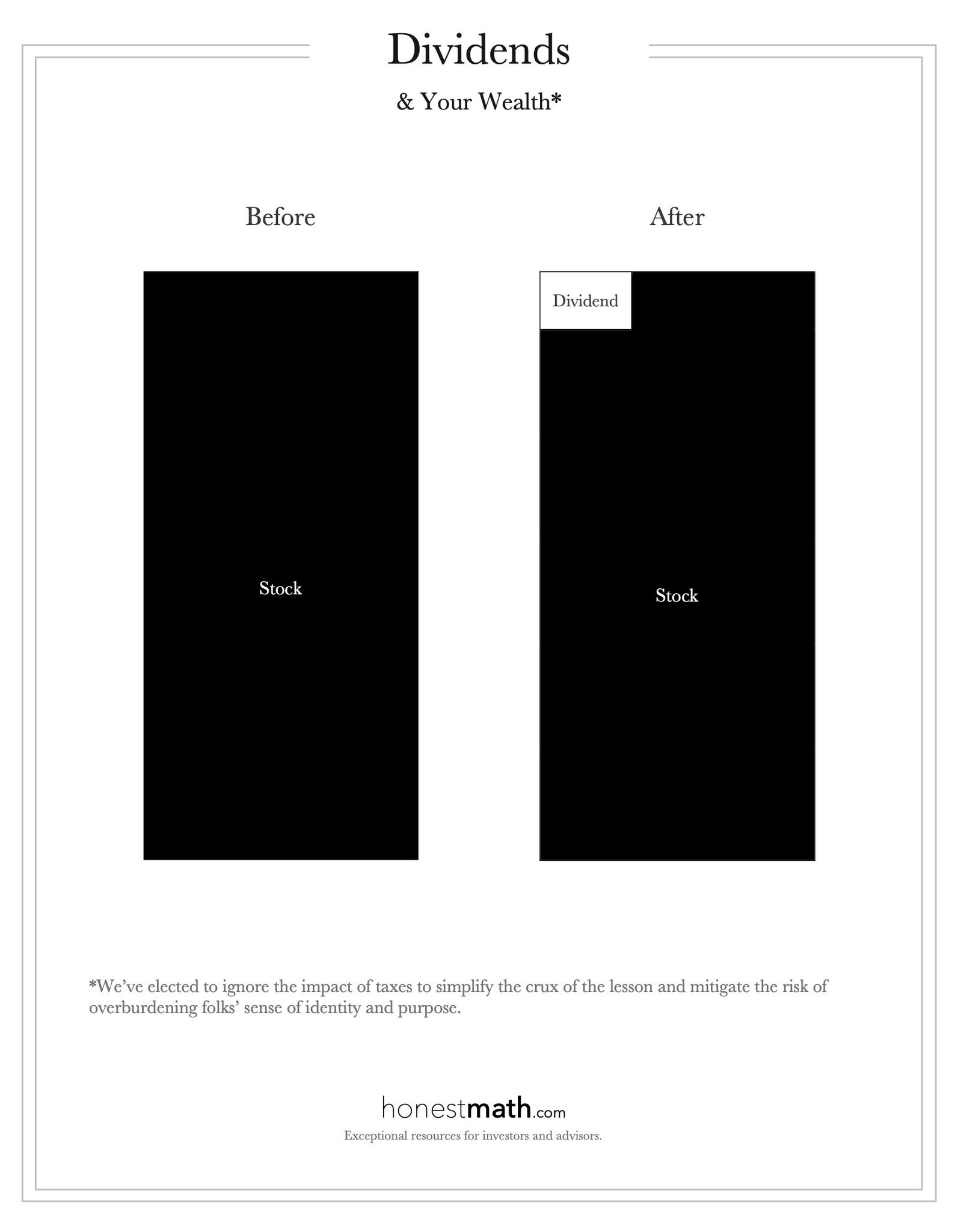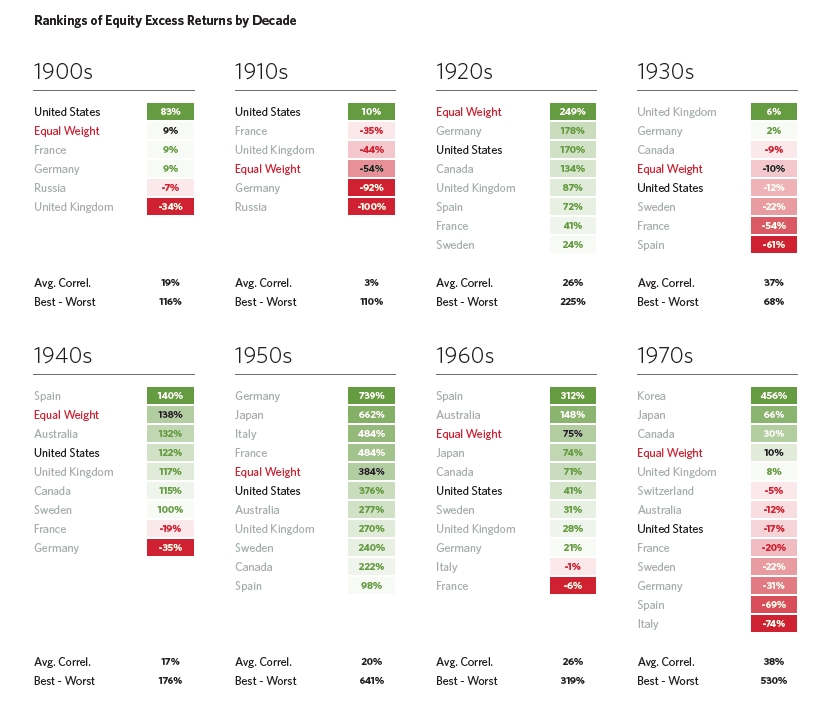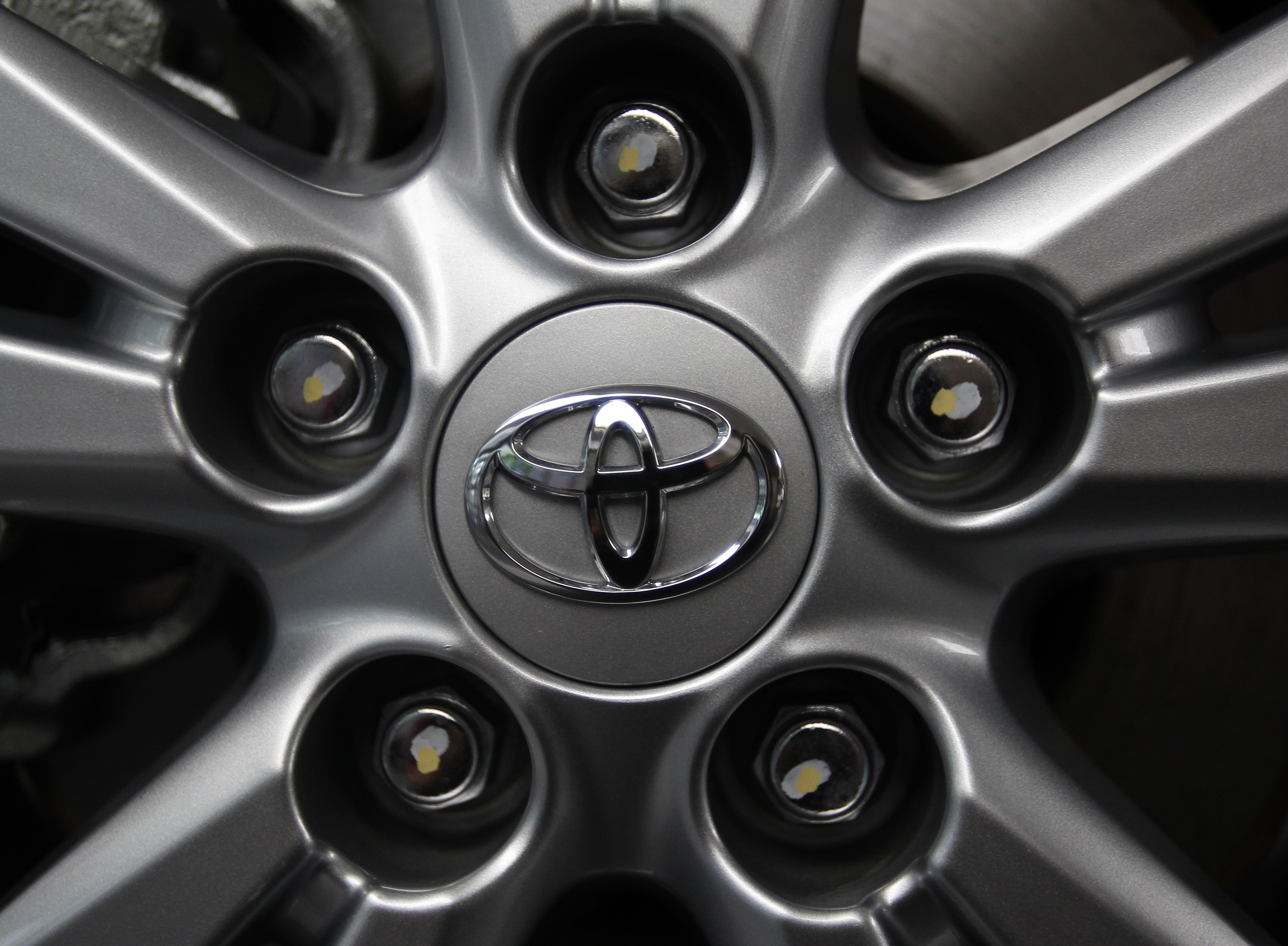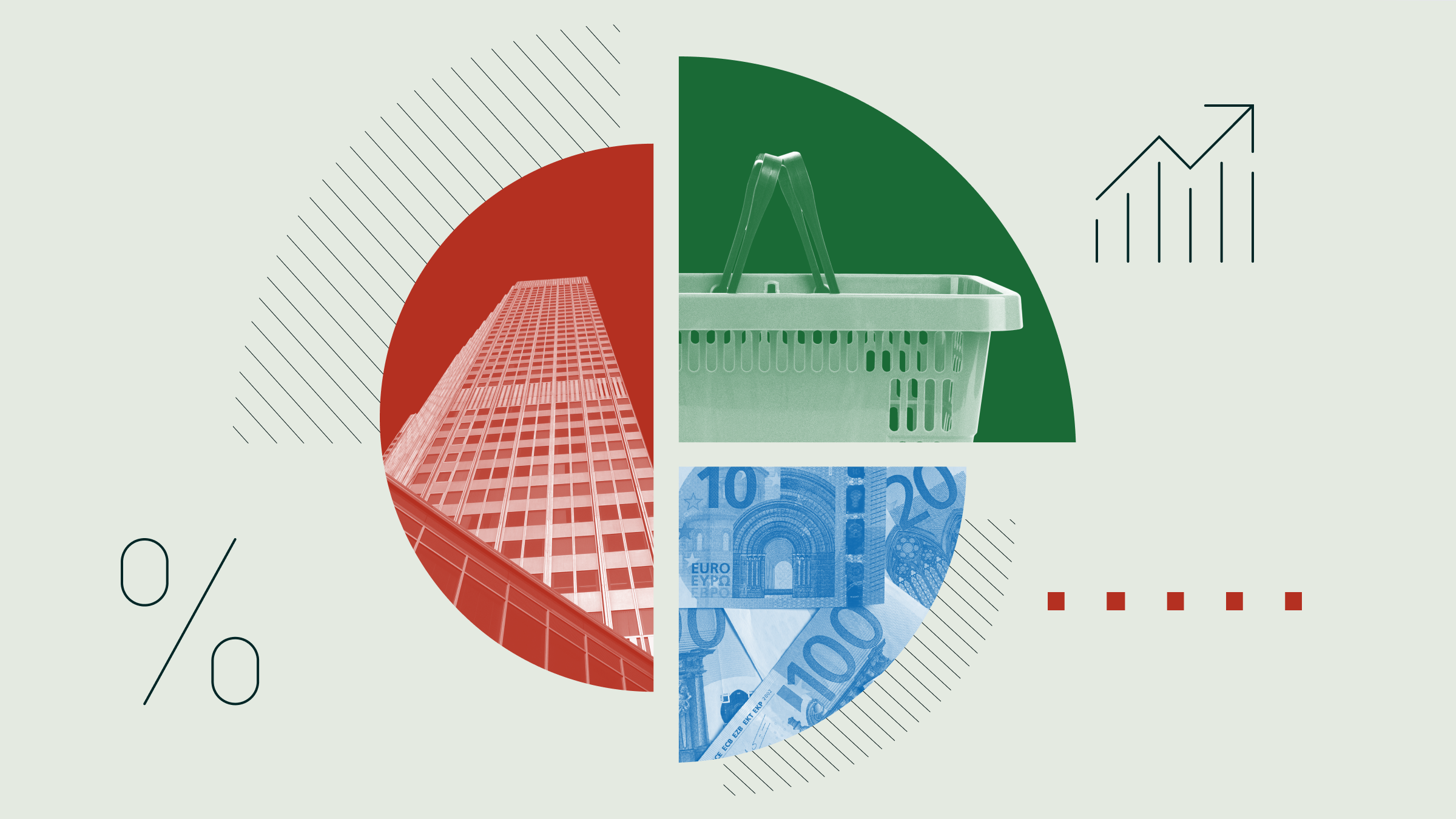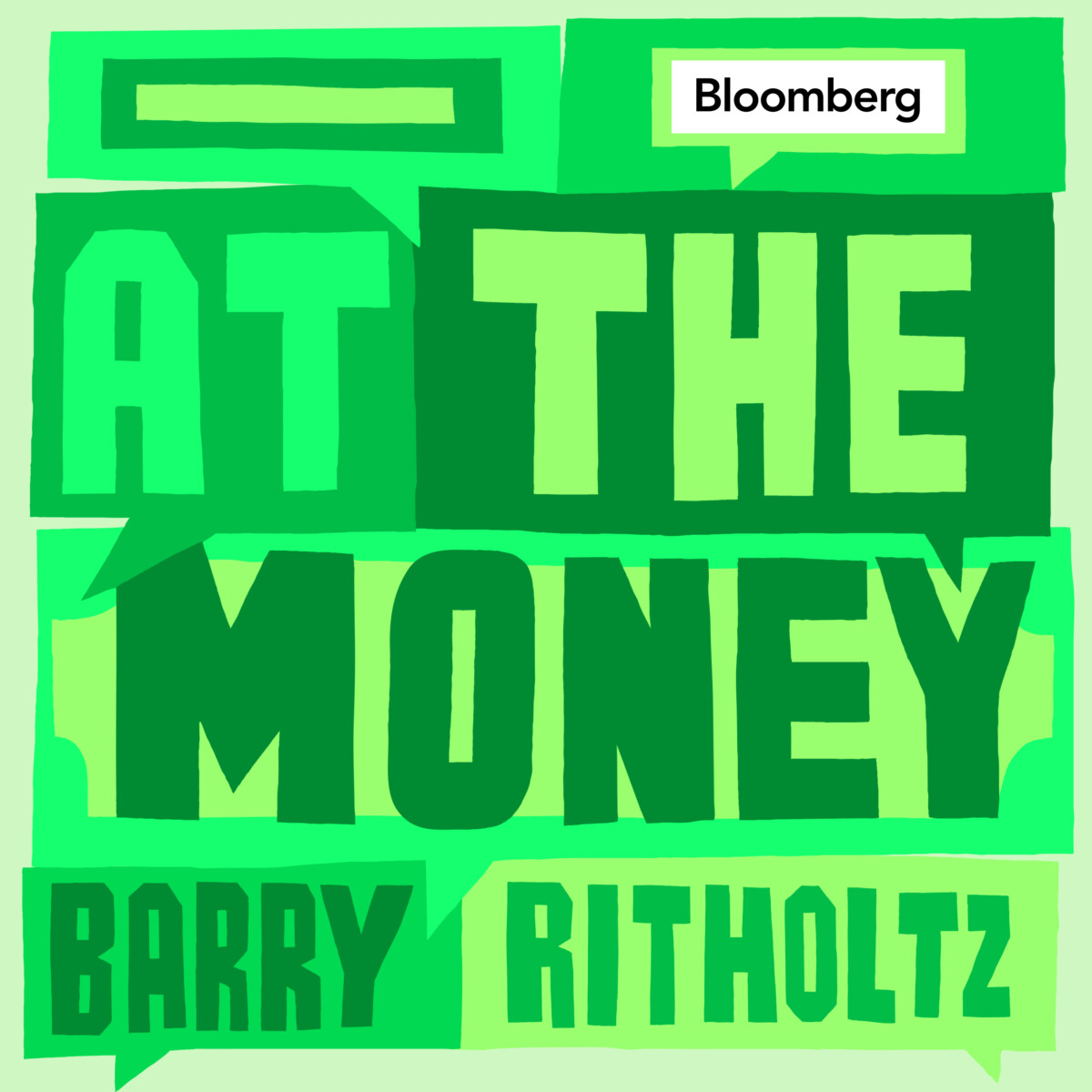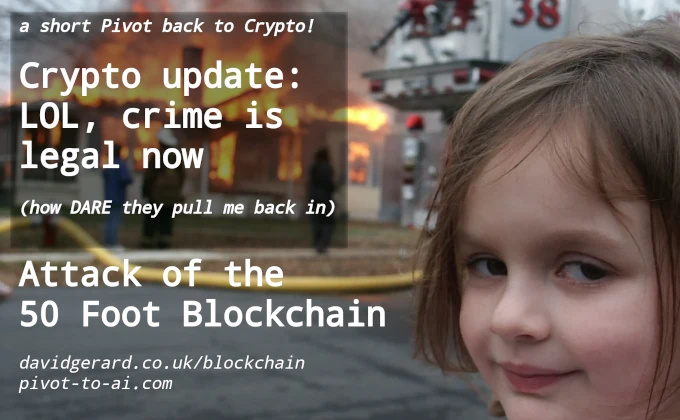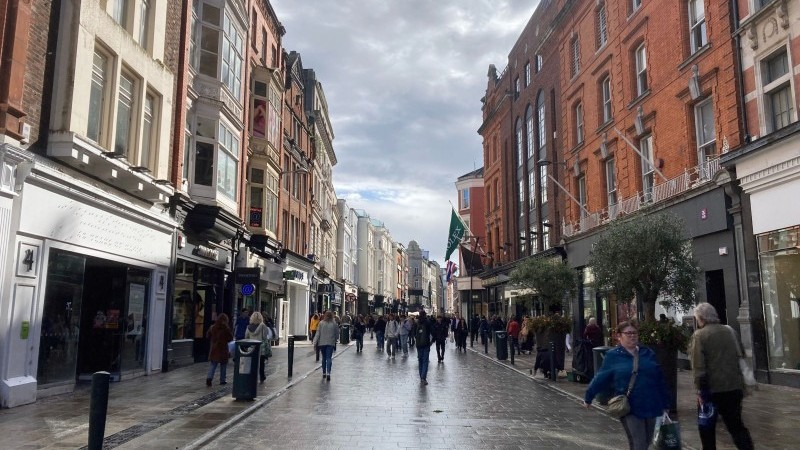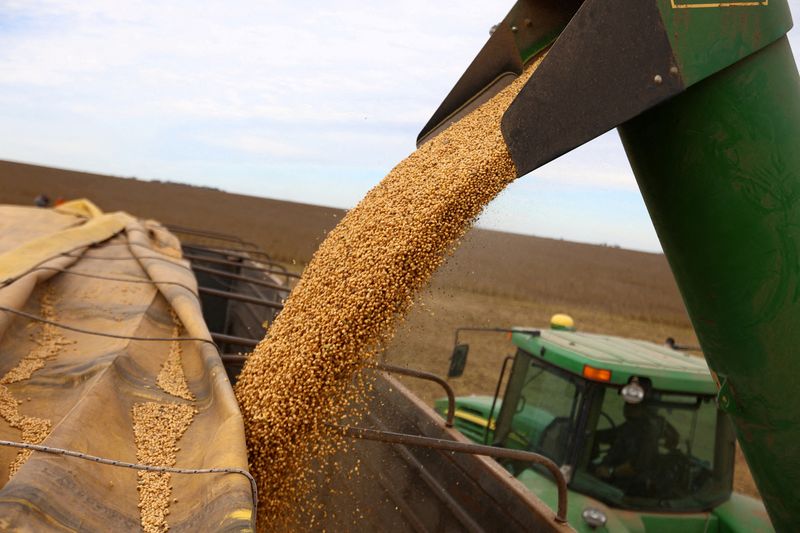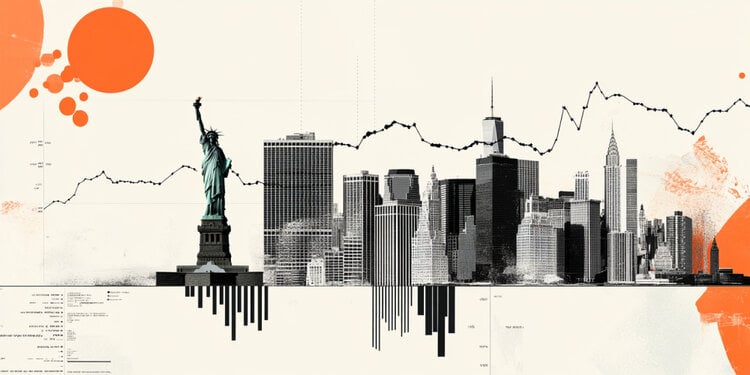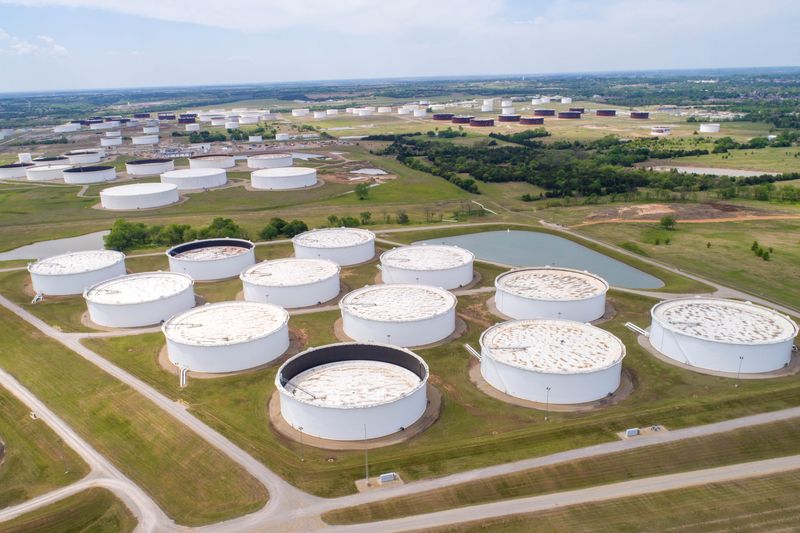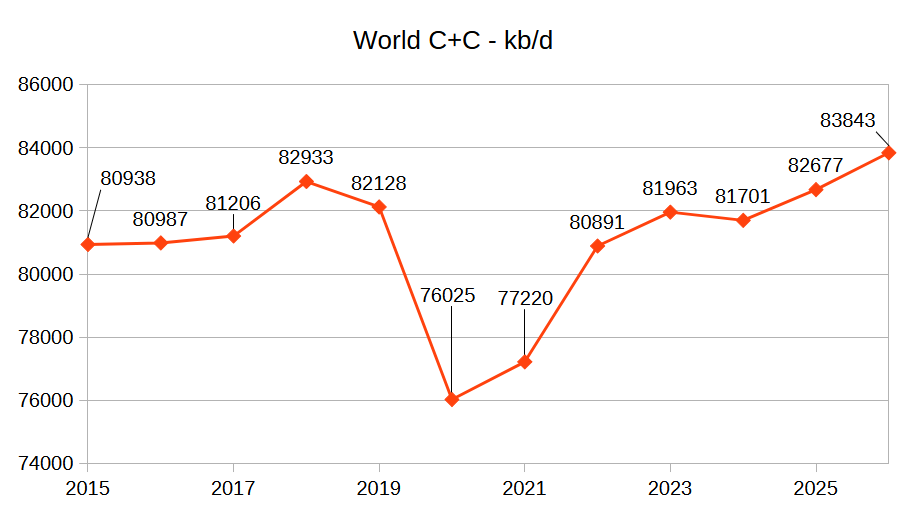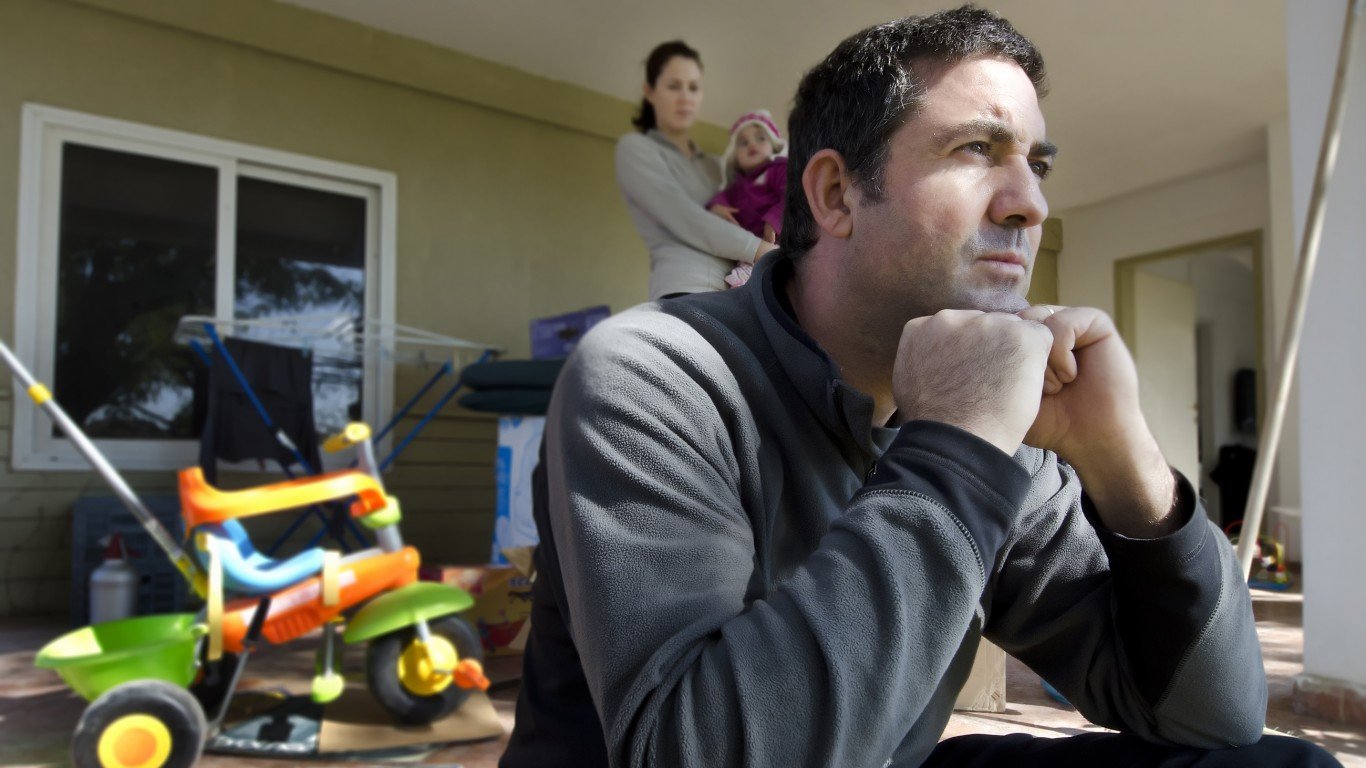In This Beautiful American Town, Only 2.4% of the Population Lives in Poverty
Generating $27.7 trillion in 2023 alone, the United States is the world’s largest economy by a wide margin — and has been for many decades. The strength of the American economy is reflected, in part, by a standard of living that is unmatched in most other countries. 24/7 Wall St. : As of 2023, […] The post In This Beautiful American Town, Only 2.4% of the Population Lives in Poverty appeared first on 24/7 Wall St..
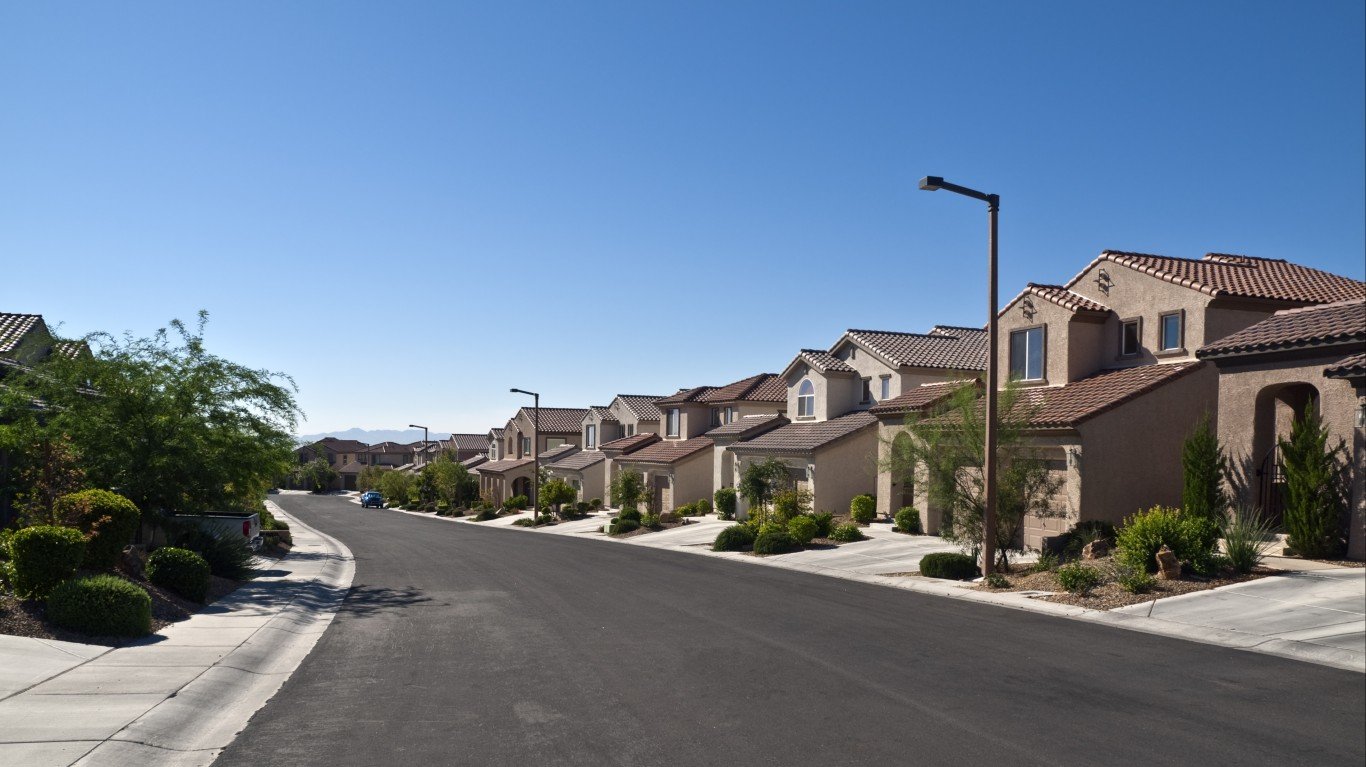
Generating $27.7 trillion in 2023 alone, the United States is the world’s largest economy by a wide margin — and has been for many decades. The strength of the American economy is reflected, in part, by a standard of living that is unmatched in most other countries.
24/7 Wall St. Key Points:
- As of 2023, about half a century after President Lyndon Johnson declared war on poverty, about 12.5% of the U.S. population were living below the poverty line.
- While poverty has never been eliminated in the United States, it has become less common in recent years — and in many parts of the country, poverty rates are closer to zero than they ever have been on a national scale.
- Also: Discover the next Nvidia
According to the World Bank, per capita income in the United States totaled $80,450 in 2023, about $67,300 more than the per capita gross national income globally. Additionally, according to a recent report from the Swiss investment bank UBS, the U.S. is home to an estimated 22 million millionaires – or about 38% of all millionaires worldwide.
Even though the U.S. economy has created substantial personal fortunes for many Americans, there are still a meaningful number of U.S. citizens who have been left behind. Currently, the poverty line is set by the Department of Health and Human Services at an annual income of $15,650 for individuals and $32,150 for a family of four in the continental United
States, with slightly higher thresholds in Alaska and Hawaii. As of 2023, the most recent year of available data, an estimated 41 million Americans – or about 12.5% of the total population — live below that income threshold.
Even in a country as wealthy as the United States, serious financial hardship has yet to be eradicated. Still, there are cities across the country that stand as a testament to the U.S. economy’s ability to afford a high standard of living to virtually every resident. In these places, the share of the population living below the poverty line is in the low single digits, less than half the national poverty rate.
Using five-year estimates from the U.S. Census Bureau’s 2023 American Community Survey, 24/7 Wall St. identified the U.S. cities with the lowest poverty rates. All cities, towns, villages, and unincorporated communities in the U.S. with available data and populations of 50,000 or more were considered in this analysis. All supplemental data are also five-year estimates from the ACS.
Among the 50 cities on this list, poverty rates range from about 4.8% to less than 2.5%. Low poverty rates often correlate with other socioeconomic indicators, and, perhaps not surprisingly, many places on this list have commonalities beyond a relative lack of serious financial hardship.
Adults with a four-year college education are at least half as likely to live below the poverty line than those who have not attended or completed college. Nationwide, 35% of the 25 and older population have a bachelor’s degree or higher, and in every city on this list, the bachelor’s degree attainment rate exceeds the national average. In most cities on this list, over half of the adult population have at least a bachelor’s degree. (Here is a look at the five most common ways for Americans to move from poverty to the middle class.)
The relative prosperity in these cities is also attributable, in part, to strong job markets. According to the U.S. Census Bureau, the average unemployment rate over the last five years stands at 5.2% nationwide. In most cities on this list, meanwhile, the five-year average jobless rate is less than 3.5%. (Here is a look at the poorest county in every state.)
These are the American cities with the lowest poverty rates.
Why it Matters
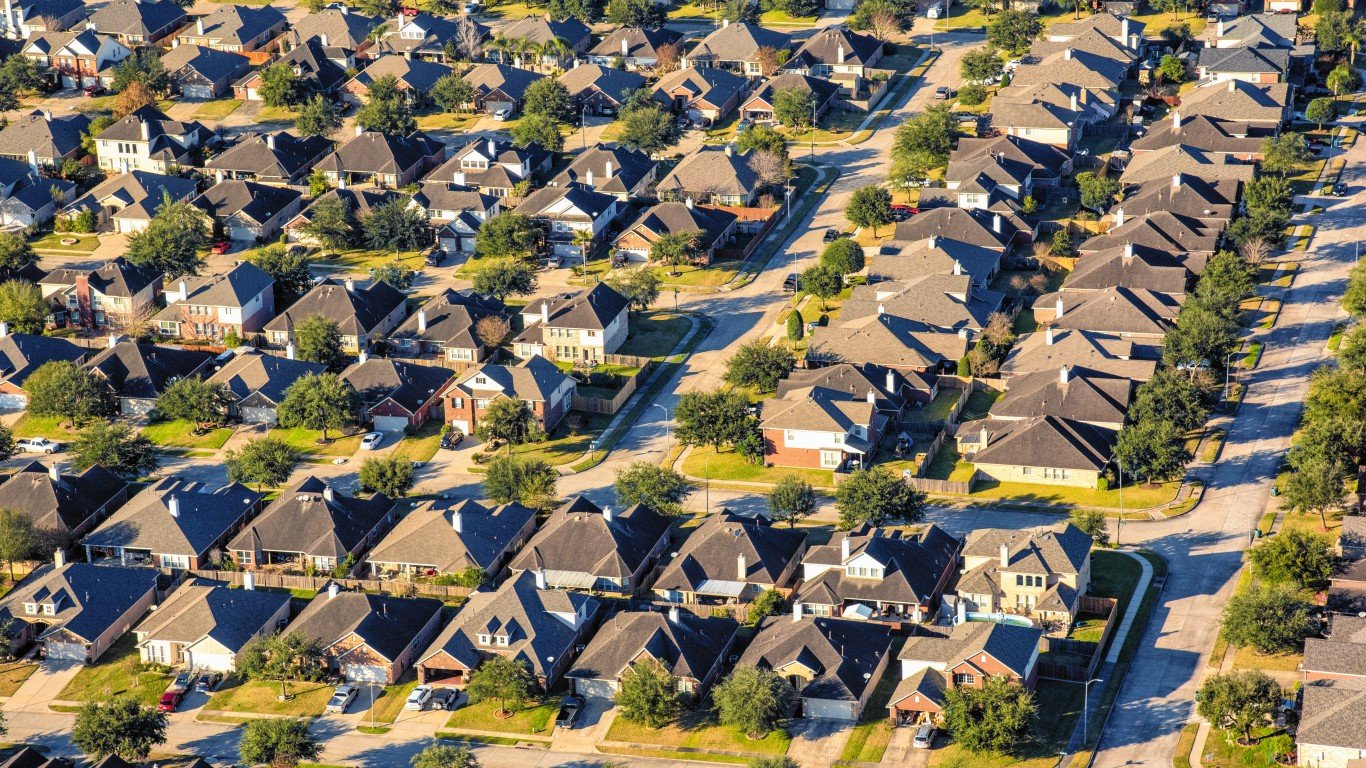
The United States is one of the wealthiest countries in the world — and even though the U.S. has never fully eradicated poverty, such serious financial hardship has become steadily less common in recent years. Currently, there are cities and towns across the country with poverty rates that are well below even the lowest historical national averages.
50. Franklin, Tennessee

- Local poverty rate in 2023: 4.8%
- Median household income in city: $115,000 ($36,462 more than national median)
- Bachelor’s degree attainment rate in city: 64.3% (29.3 ppts. higher than comparable national rate)
- Five-year avg. unemployment rate in city: 2.4% (2.8 ppts. lower than national jobless rate)
- City population: 85,575
49. Levittown, New York
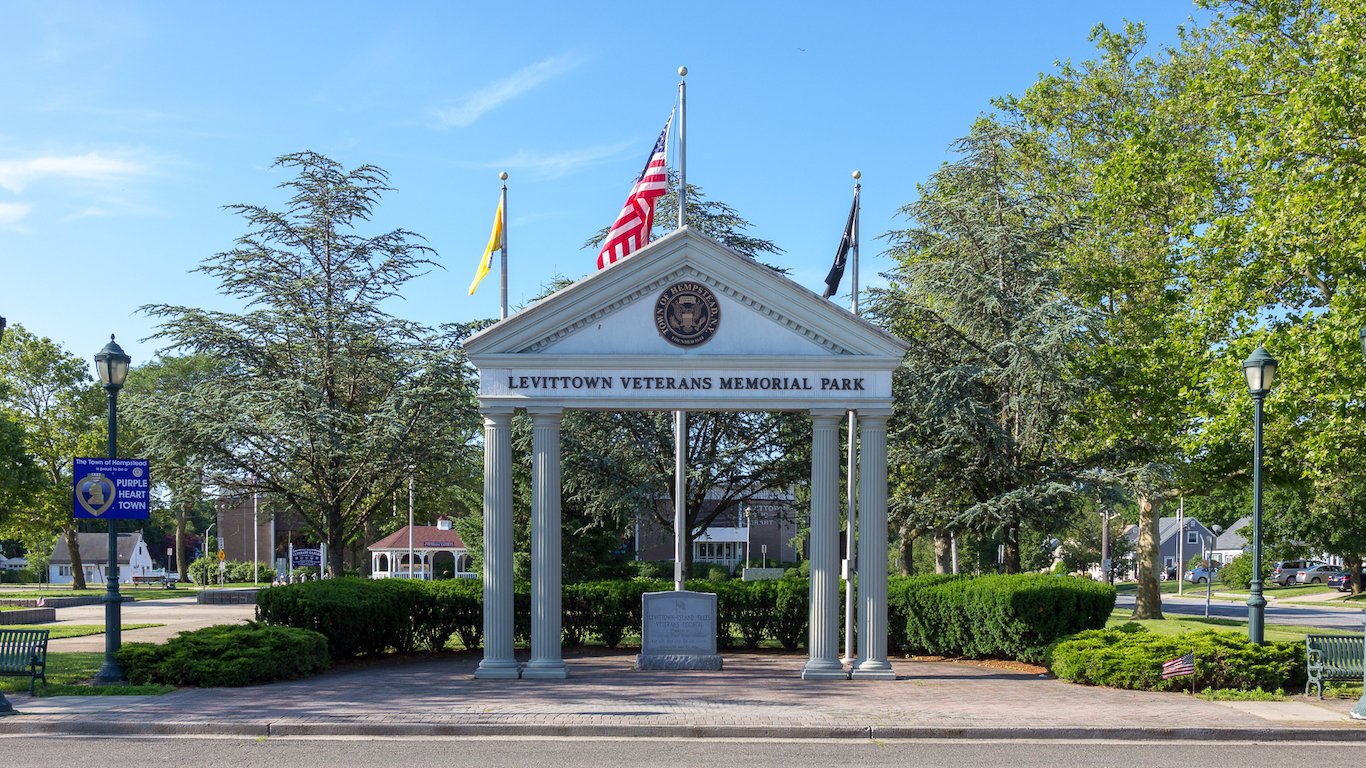
- Local poverty rate in 2023: 4.8%
- Median household income in city: $139,696 ($61,158 more than national median)
- Bachelor’s degree attainment rate in city: 37.6% (2.6 ppts. higher than comparable national rate)
- Five-year avg. unemployment rate in city: 5.4% (0.2 ppts. higher than national jobless rate)
- City population: 51,557
48. Minnetonka, Minnesota

- Local poverty rate in 2023: 4.8%
- Median household income in city: $120,496 ($41,958 more than national median)
- Bachelor’s degree attainment rate in city: 63.3% (28.3 ppts. higher than comparable national rate)
- Five-year avg. unemployment rate in city: 2.2% (3 ppts. lower than national jobless rate)
- City population: 53,256
47. O’Fallon, Missouri

- Local poverty rate in 2023: 4.7%
- Median household income in city: $107,203 ($28,665 more than national median)
- Bachelor’s degree attainment rate in city: 42.4% (7.4 ppts. higher than comparable national rate)
- Five-year avg. unemployment rate in city: 2.7% (2.5 ppts. lower than national jobless rate)
- City population: 92,697
46. Novi, Michigan

- Local poverty rate in 2023: 4.7%
- Median household income in city: $110,938 ($32,400 more than national median)
- Bachelor’s degree attainment rate in city: 61.2% (26.2 ppts. higher than comparable national rate)
- Five-year avg. unemployment rate in city: 3.8% (1.4 ppts. lower than national jobless rate)
- City population: 66,224
45. Livonia, Michigan
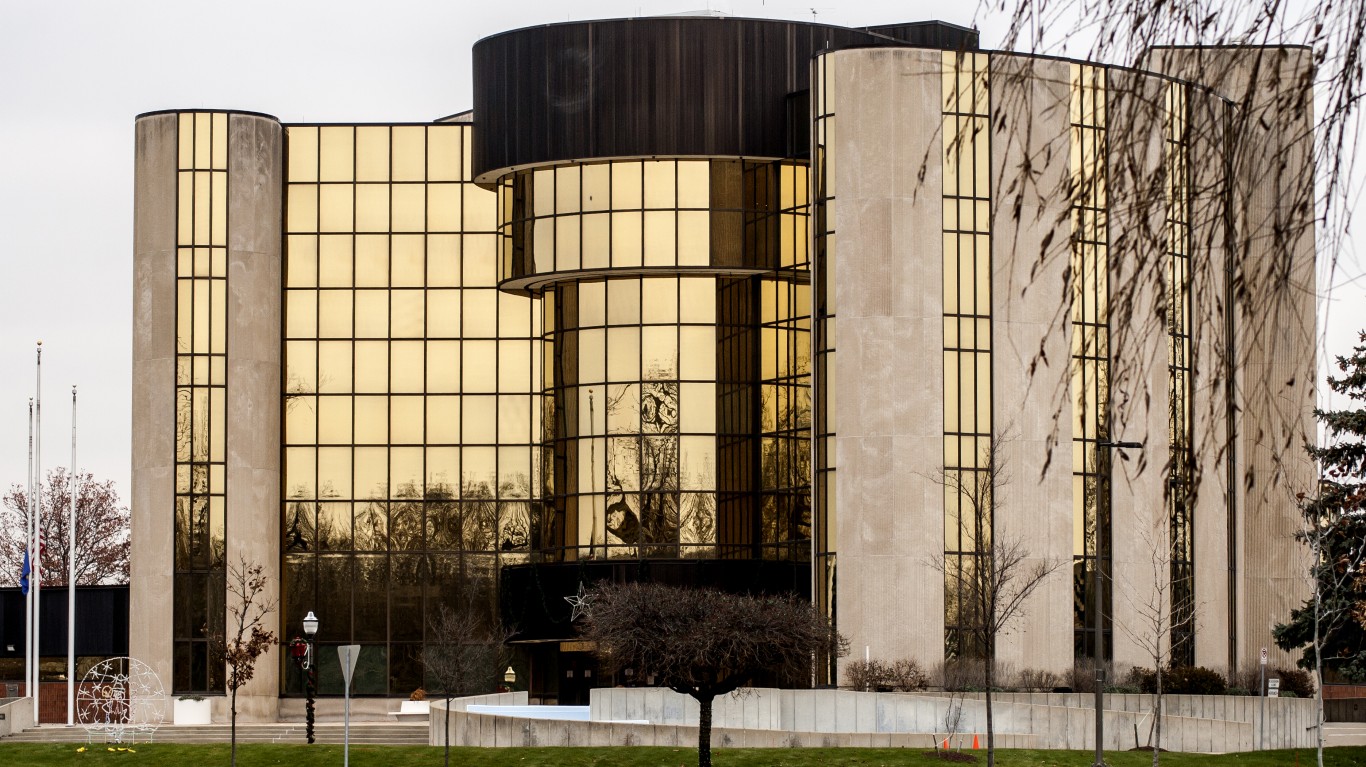
- Local poverty rate in 2023: 4.7%
- Median household income in city: $96,317 ($17,779 more than national median)
- Bachelor’s degree attainment rate in city: 40.5% (5.5 ppts. higher than comparable national rate)
- Five-year avg. unemployment rate in city: 4.6% (0.6 ppts. lower than national jobless rate)
- City population: 94,058
44. Newton, Massachusetts

- Local poverty rate in 2023: 4.7%
- Median household income in city: $184,989 ($106,451 more than national median)
- Bachelor’s degree attainment rate in city: 80.7% (45.7 ppts. higher than comparable national rate)
- Five-year avg. unemployment rate in city: 3.3% (1.9 ppts. lower than national jobless rate)
- City population: 88,504
43. Catalina Foothills, Arizona

- Local poverty rate in 2023: 4.6%
- Median household income in city: $113,201 ($34,663 more than national median)
- Bachelor’s degree attainment rate in city: 70.8% (35.8 ppts. higher than comparable national rate)
- Five-year avg. unemployment rate in city: 3.2% (2 ppts. lower than national jobless rate)
- City population: 51,756
42. League City, Texas
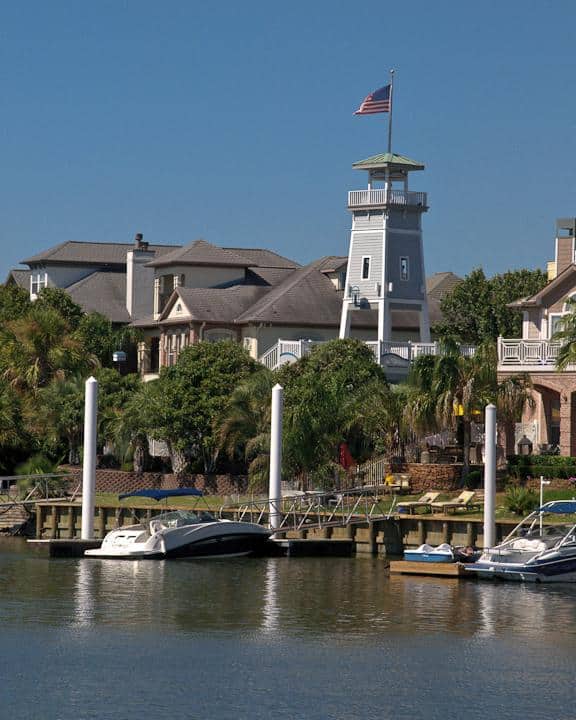
- Local poverty rate in 2023: 4.5%
- Median household income in city: $119,870 ($41,332 more than national median)
- Bachelor’s degree attainment rate in city: 48.0% (13.0 ppts. higher than comparable national rate)
- Five-year avg. unemployment rate in city: 3.6% (1.6 ppts. lower than national jobless rate)
- City population: 114,885
41. Milford, Connecticut

- Local poverty rate in 2023: 4.5%
- Median household income in city: $110,126 ($31,588 more than national median)
- Bachelor’s degree attainment rate in city: 48.4% (13.4 ppts. higher than comparable national rate)
- Five-year avg. unemployment rate in city: 4.5% (0.7 ppts. lower than national jobless rate)
- City population: 50,749
40. Leander, Texas
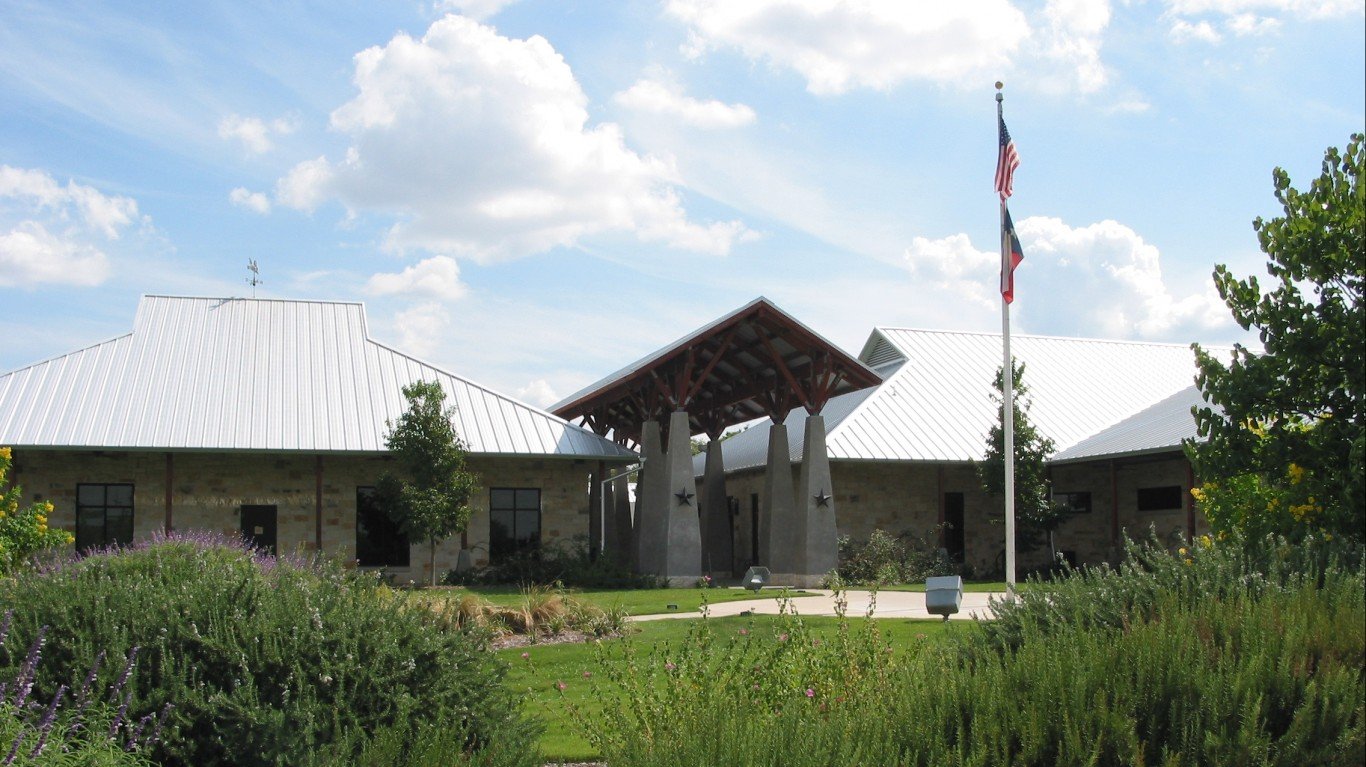
- Local poverty rate in 2023: 4.4%
- Median household income in city: $140,180 ($61,642 more than national median)
- Bachelor’s degree attainment rate in city: 52.3% (17.3 ppts. higher than comparable national rate)
- Five-year avg. unemployment rate in city: 3.2% (2 ppts. lower than national jobless rate)
- City population: 67,880
39. Edina, Minnesota

- Local poverty rate in 2023: 4.4%
- Median household income in city: $129,225 ($50,687 more than national median)
- Bachelor’s degree attainment rate in city: 72.2% (37.2 ppts. higher than comparable national rate)
- Five-year avg. unemployment rate in city: 3.8% (1.4 ppts. lower than national jobless rate)
- City population: 53,125
38. Naperville, Illinois
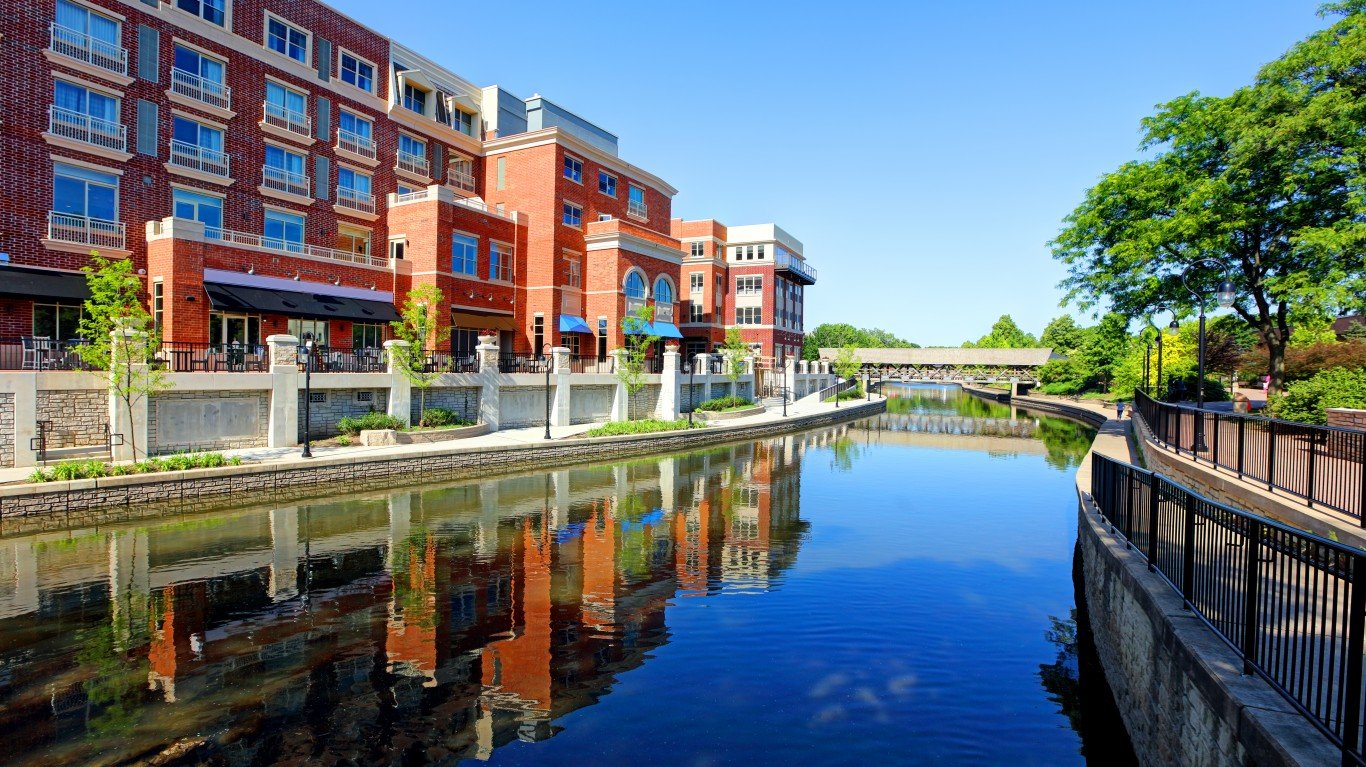
- Local poverty rate in 2023: 4.4%
- Median household income in city: $150,937 ($72,399 more than national median)
- Bachelor’s degree attainment rate in city: 71.7% (36.7 ppts. higher than comparable national rate)
- Five-year avg. unemployment rate in city: 4.2% (1 ppts. lower than national jobless rate)
- City population: 149,424
37. Sammamish, Washington

- Local poverty rate in 2023: 4.4%
- Median household income in city: $227,273 ($148,735 more than national median)
- Bachelor’s degree attainment rate in city: 77.0% (42.0 ppts. higher than comparable national rate)
- Five-year avg. unemployment rate in city: 2.7% (2.5 ppts. lower than national jobless rate)
- City population: 66,375
36. Livermore, California

- Local poverty rate in 2023: 4.4%
- Median household income in city: $153,602 ($75,064 more than national median)
- Bachelor’s degree attainment rate in city: 50.6% (15.6 ppts. higher than comparable national rate)
- Five-year avg. unemployment rate in city: 3.4% (1.8 ppts. lower than national jobless rate)
- City population: 85,870
35. The Villages, Florida
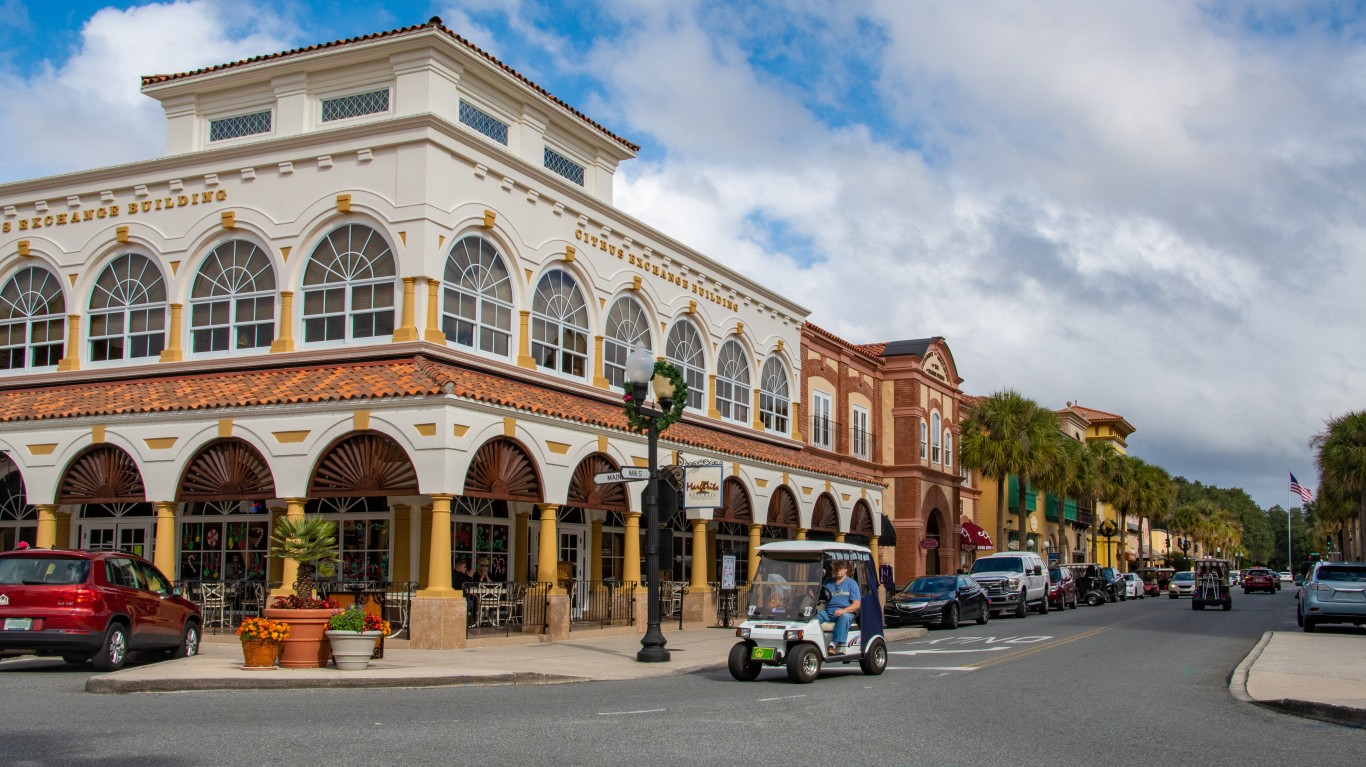
- Local poverty rate in 2023: 4.3%
- Median household income in city: $76,523 ($2,015 less than national median)
- Bachelor’s degree attainment rate in city: 42.9% (7.9 ppts. higher than comparable national rate)
- Five-year avg. unemployment rate in city: 4.2% (1 ppts. lower than national jobless rate)
- City population: 82,108
34. Dublin, California

- Local poverty rate in 2023: 4.3%
- Median household income in city: $205,046 ($126,508 more than national median)
- Bachelor’s degree attainment rate in city: 69.5% (34.5 ppts. higher than comparable national rate)
- Five-year avg. unemployment rate in city: 3.5% (1.7 ppts. lower than national jobless rate)
- City population: 70,542
33. Cupertino, California
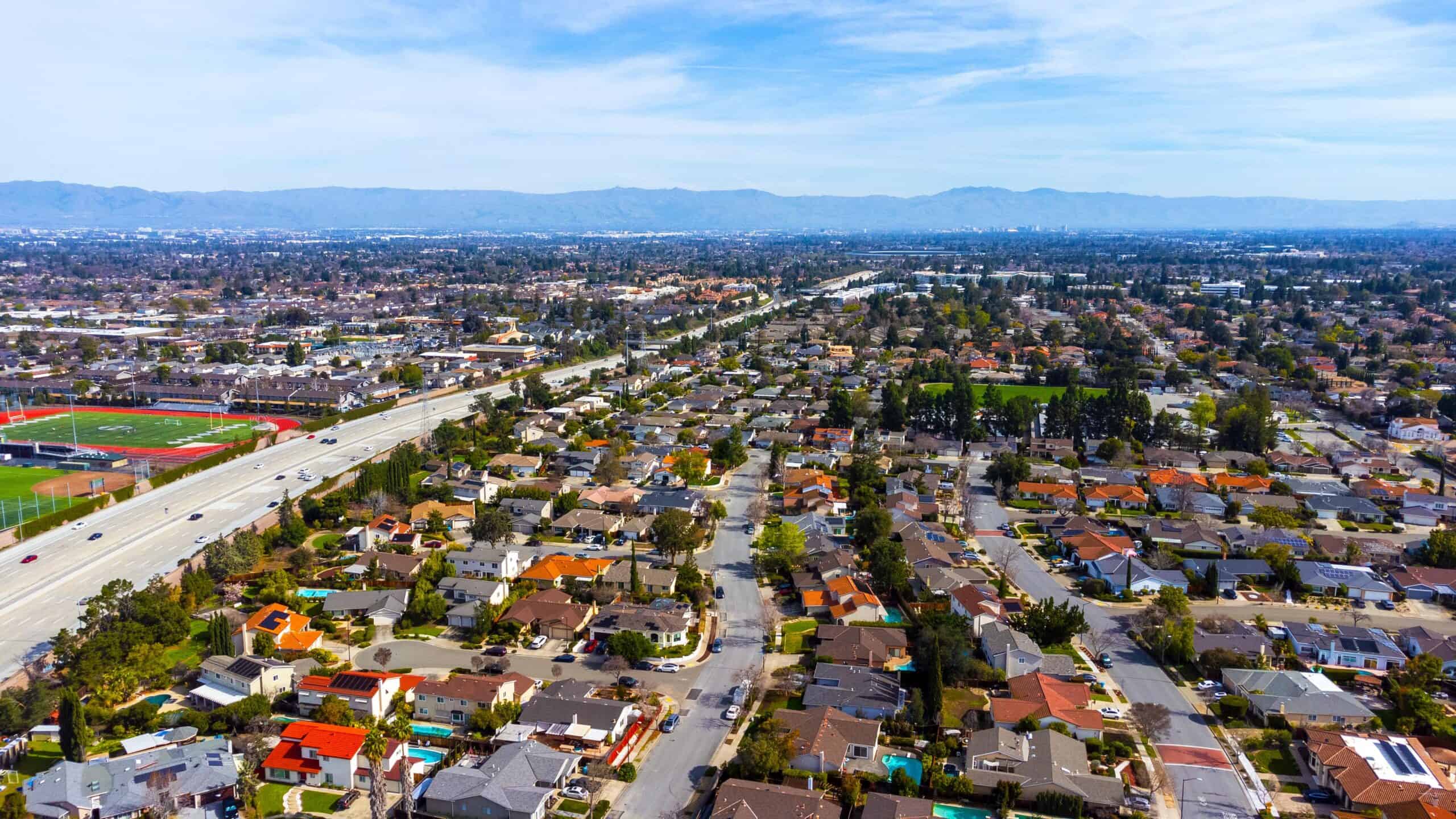
- Local poverty rate in 2023: 4.3%
- Median household income in city: $231,139 ($152,601 more than national median)
- Bachelor’s degree attainment rate in city: 83.1% (48.1 ppts. higher than comparable national rate)
- Five-year avg. unemployment rate in city: 3.4% (1.8 ppts. lower than national jobless rate)
- City population: 58,886
32. Pearland, Texas
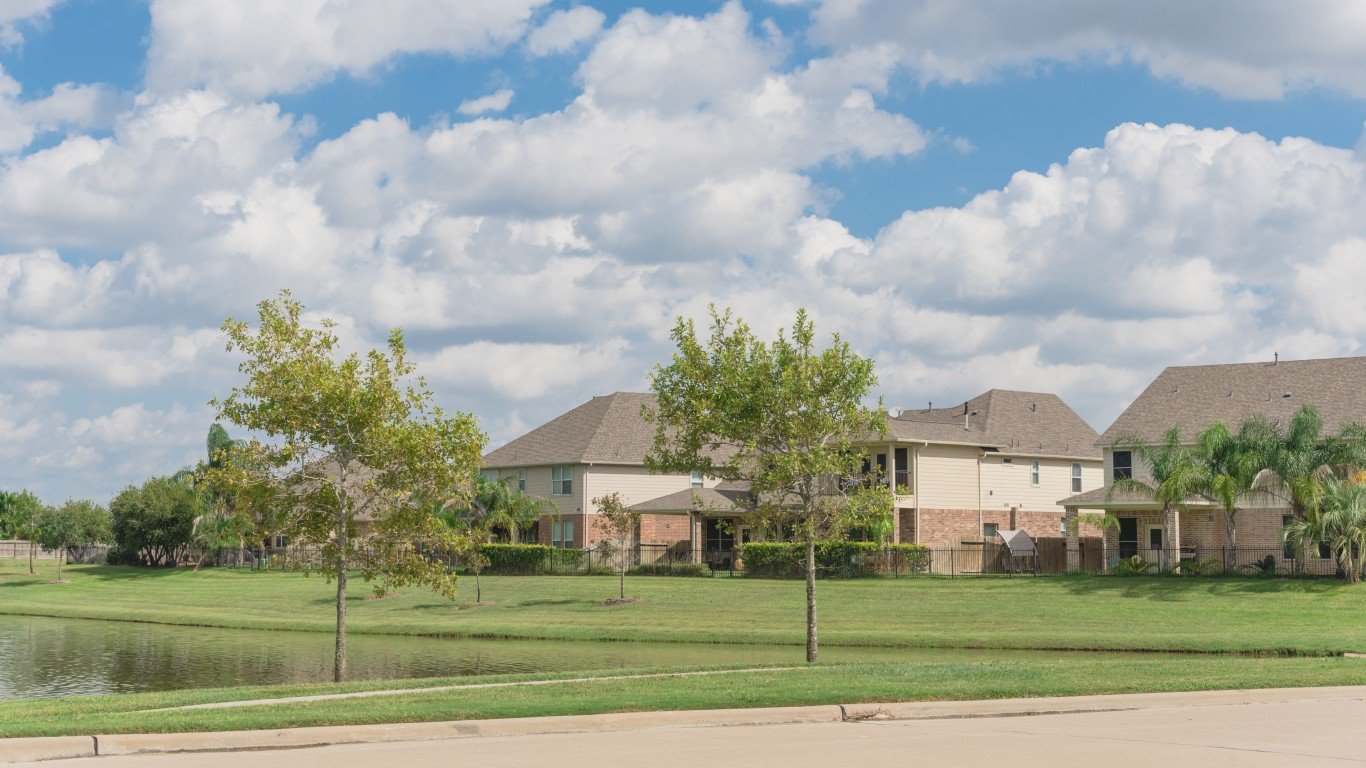
- Local poverty rate in 2023: 4.2%
- Median household income in city: $112,470 ($33,932 more than national median)
- Bachelor’s degree attainment rate in city: 47.4% (12.4 ppts. higher than comparable national rate)
- Five-year avg. unemployment rate in city: 3.1% (2.1 ppts. lower than national jobless rate)
- City population: 125,983
31. Spring Hill, Tennessee

- Local poverty rate in 2023: 4.2%
- Median household income in city: $106,658 ($28,120 more than national median)
- Bachelor’s degree attainment rate in city: 46.0% (11.0 ppts. higher than comparable national rate)
- Five-year avg. unemployment rate in city: 1.4% (3.8 ppts. lower than national jobless rate)
- City population: 53,585
30. Bel Air South, Maryland

- Local poverty rate in 2023: 4.2%
- Median household income in city: $120,721 ($42,183 more than national median)
- Bachelor’s degree attainment rate in city: 47.2% (12.2 ppts. higher than comparable national rate)
- Five-year avg. unemployment rate in city: 3.4% (1.8 ppts. lower than national jobless rate)
- City population: 57,702
29. East Honolulu, Hawaii
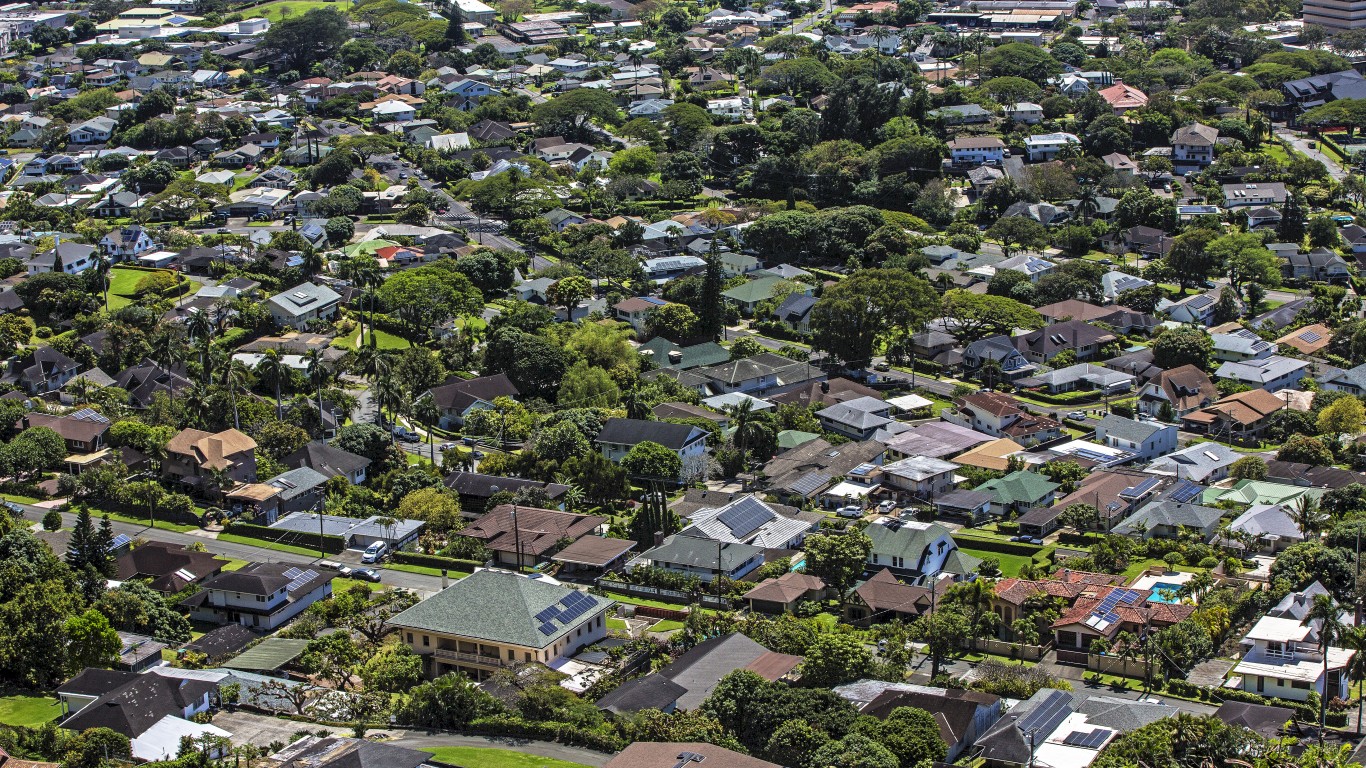
- Local poverty rate in 2023: 4.1%
- Median household income in city: $158,398 ($79,860 more than national median)
- Bachelor’s degree attainment rate in city: 60.6% (25.6 ppts. higher than comparable national rate)
- Five-year avg. unemployment rate in city: 4.5% (0.7 ppts. lower than national jobless rate)
- City population: 50,961
28. Plymouth, Minnesota
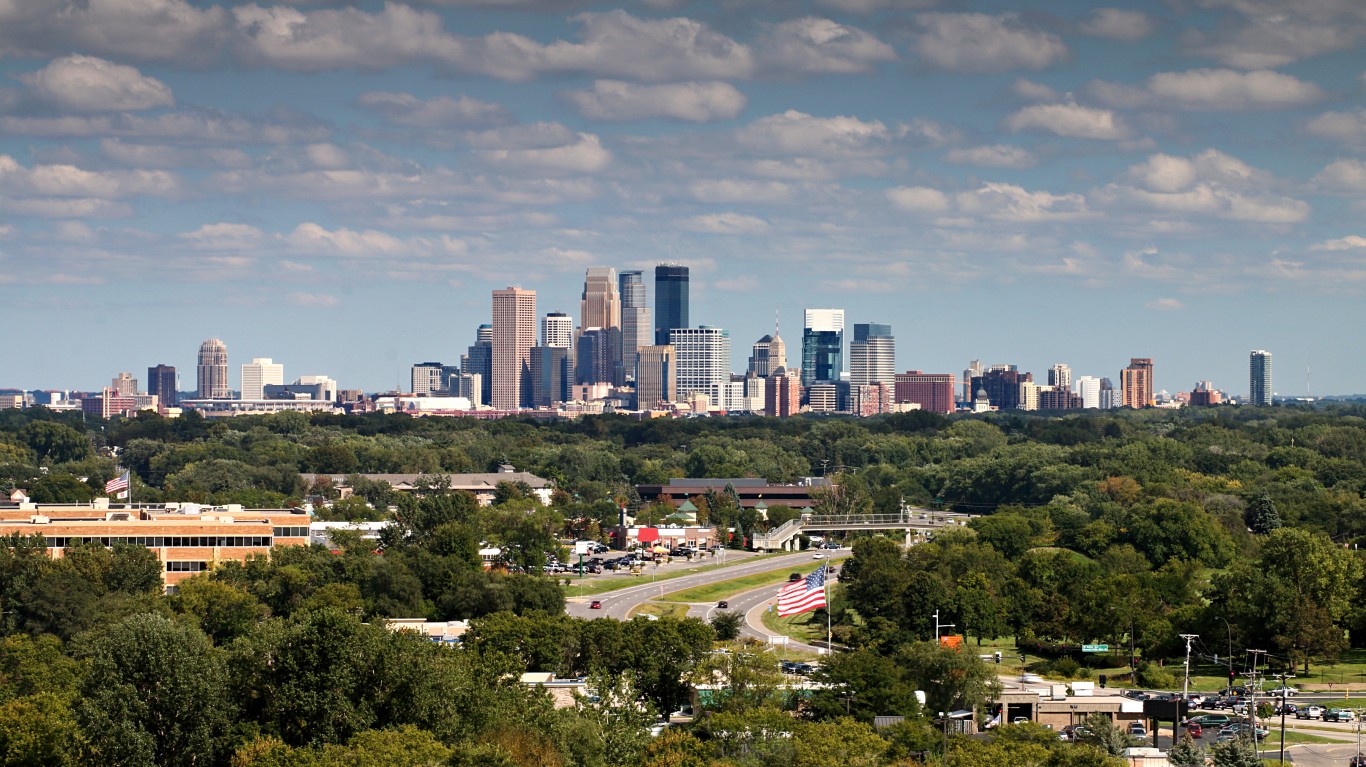
- Local poverty rate in 2023: 4.1%
- Median household income in city: $133,865 ($55,327 more than national median)
- Bachelor’s degree attainment rate in city: 64.8% (29.8 ppts. higher than comparable national rate)
- Five-year avg. unemployment rate in city: 2% (3.2 ppts. lower than national jobless rate)
- City population: 79,526
27. Bowie, Maryland
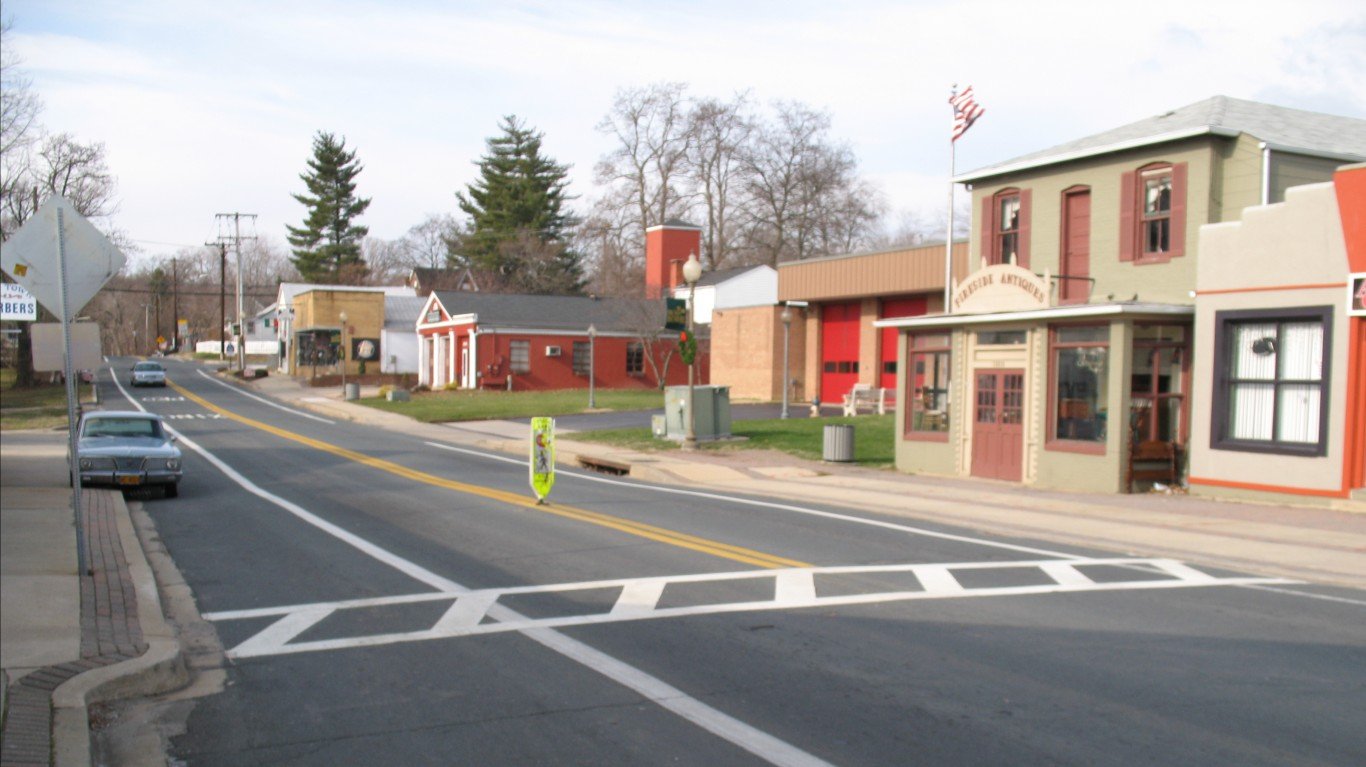
- Local poverty rate in 2023: 4.1%
- Median household income in city: $141,831 ($63,293 more than national median)
- Bachelor’s degree attainment rate in city: 50.1% (15.1 ppts. higher than comparable national rate)
- Five-year avg. unemployment rate in city: 4.5% (0.7 ppts. lower than national jobless rate)
- City population: 57,771
26. Ankeny, Iowa

- Local poverty rate in 2023: 4.1%
- Median household income in city: $106,603 ($28,065 more than national median)
- Bachelor’s degree attainment rate in city: 53.2% (18.2 ppts. higher than comparable national rate)
- Five-year avg. unemployment rate in city: 2.2% (3 ppts. lower than national jobless rate)
- City population: 70,542
25. San Ramon, California

- Local poverty rate in 2023: 4.1%
- Median household income in city: $197,358 ($118,820 more than national median)
- Bachelor’s degree attainment rate in city: 71.2% (36.2 ppts. higher than comparable national rate)
- Five-year avg. unemployment rate in city: 5% (0.2 ppts. lower than national jobless rate)
- City population: 85,734
24. Flower Mound, Texas

- Local poverty rate in 2023: 4.0%
- Median household income in city: $157,737 ($79,199 more than national median)
- Bachelor’s degree attainment rate in city: 64.3% (29.3 ppts. higher than comparable national rate)
- Five-year avg. unemployment rate in city: 3.2% (2 ppts. lower than national jobless rate)
- City population: 77,886
23. Bethesda, Maryland
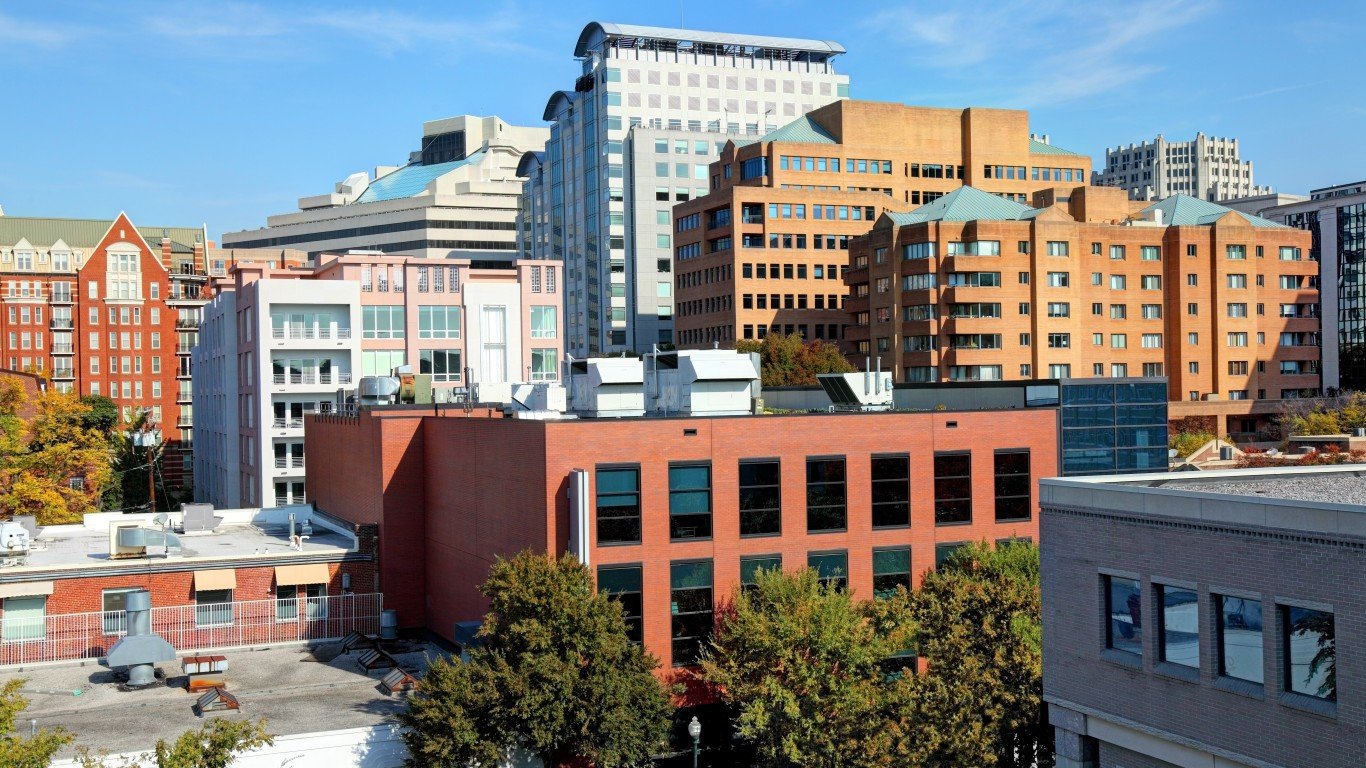
- Local poverty rate in 2023: 4.0%
- Median household income in city: $191,348 ($112,810 more than national median)
- Bachelor’s degree attainment rate in city: 87.1% (52.1 ppts. higher than comparable national rate)
- Five-year avg. unemployment rate in city: 3.2% (2 ppts. lower than national jobless rate)
- City population: 67,403
22. Madison, Alabama
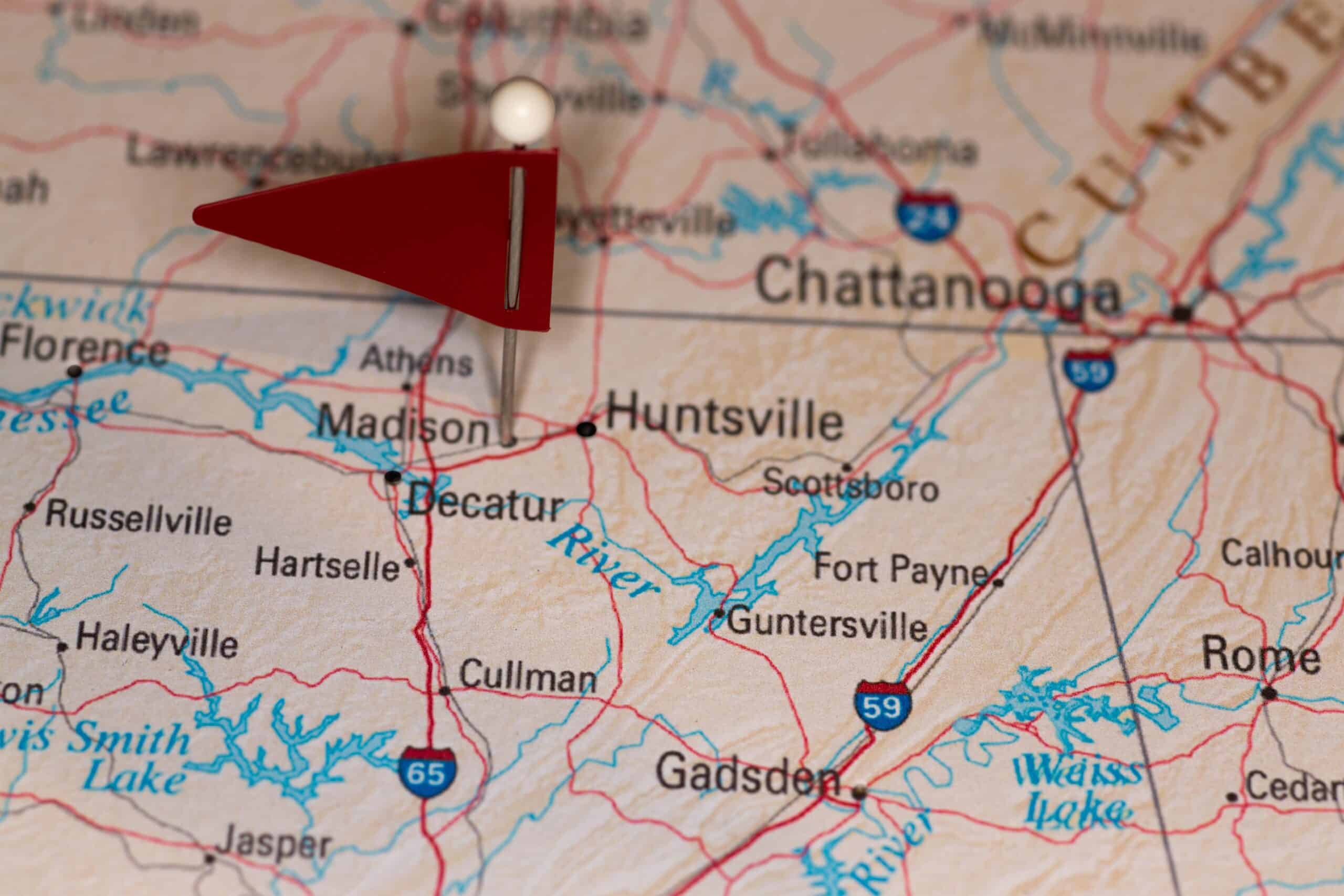
- Local poverty rate in 2023: 4.0%
- Median household income in city: $131,436 ($52,898 more than national median)
- Bachelor’s degree attainment rate in city: 65.9% (30.9 ppts. higher than comparable national rate)
- Five-year avg. unemployment rate in city: 2.5% (2.7 ppts. lower than national jobless rate)
- City population: 58,335
21. Johns Creek, Georgia
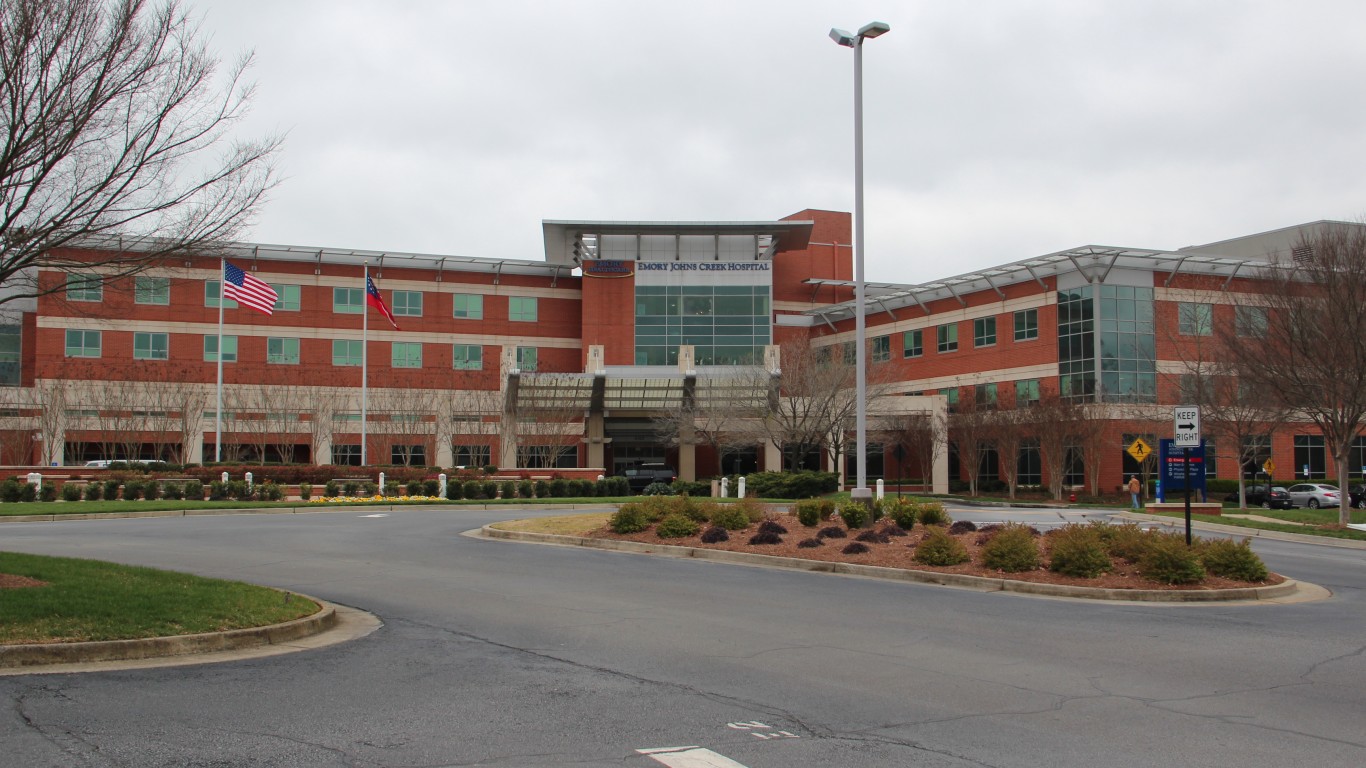
- Local poverty rate in 2023: 3.9%
- Median household income in city: $160,185 ($81,647 more than national median)
- Bachelor’s degree attainment rate in city: 70.7% (35.7 ppts. higher than comparable national rate)
- Five-year avg. unemployment rate in city: 4.2% (1 ppts. lower than national jobless rate)
- City population: 82,115
20. Maple Grove, Minnesota
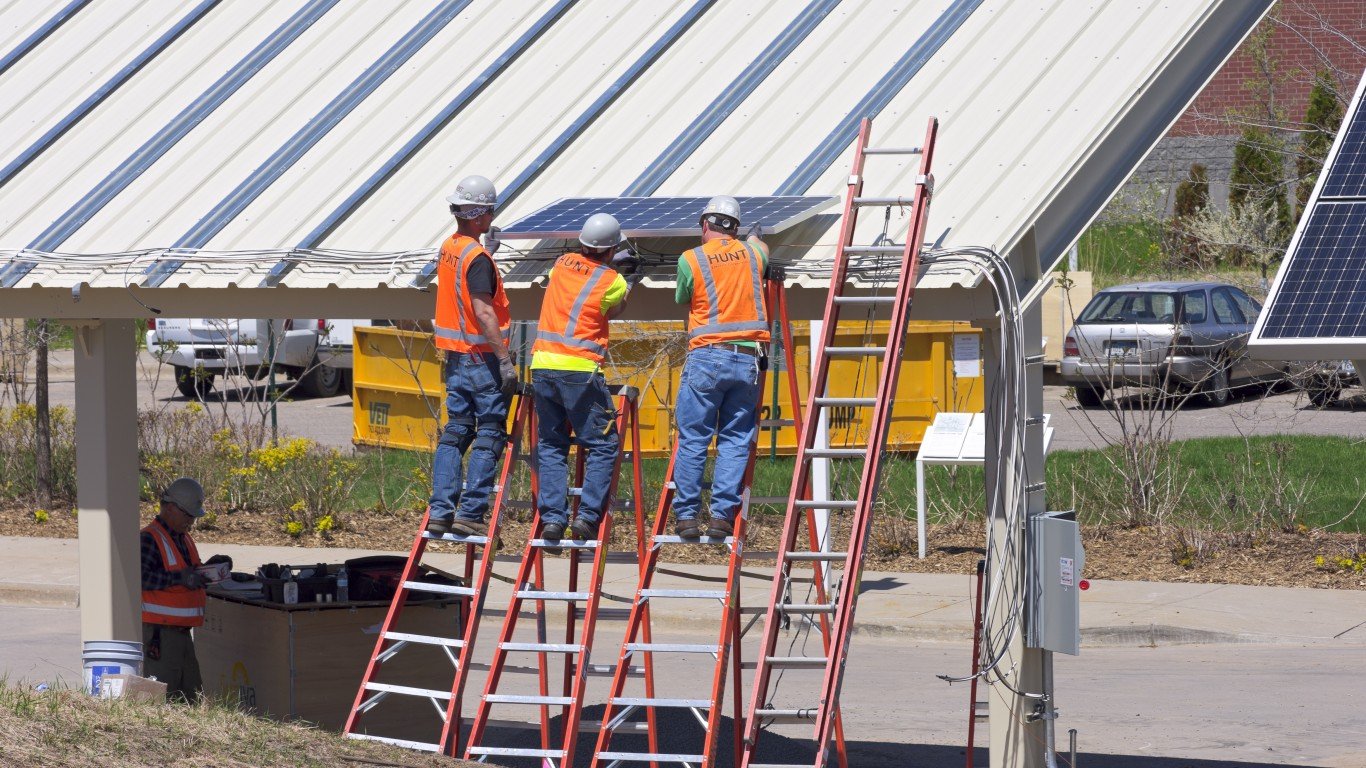
- Local poverty rate in 2023: 3.9%
- Median household income in city: $129,481 ($50,943 more than national median)
- Bachelor’s degree attainment rate in city: 55.9% (20.9 ppts. higher than comparable national rate)
- Five-year avg. unemployment rate in city: 3.8% (1.4 ppts. lower than national jobless rate)
- City population: 70,539
19. Westfield, Indiana

- Local poverty rate in 2023: 3.9%
- Median household income in city: $119,598 ($41,060 more than national median)
- Bachelor’s degree attainment rate in city: 60.3% (25.3 ppts. higher than comparable national rate)
- Five-year avg. unemployment rate in city: 2.2% (3 ppts. lower than national jobless rate)
- City population: 51,109
18. Castle Rock, Colorado

- Local poverty rate in 2023: 3.8%
- Median household income in city: $143,031 ($64,493 more than national median)
- Bachelor’s degree attainment rate in city: 54.9% (19.9 ppts. higher than comparable national rate)
- Five-year avg. unemployment rate in city: 4.5% (0.7 ppts. lower than national jobless rate)
- City population: 76,614
17. Carmel, Indiana

- Local poverty rate in 2023: 3.7%
- Median household income in city: $134,602 ($56,064 more than national median)
- Bachelor’s degree attainment rate in city: 74.5% (39.5 ppts. higher than comparable national rate)
- Five-year avg. unemployment rate in city: 2.7% (2.5 ppts. lower than national jobless rate)
- City population: 100,501
16. El Dorado Hills, California

- Local poverty rate in 2023: 3.7%
- Median household income in city: $163,544 ($85,006 more than national median)
- Bachelor’s degree attainment rate in city: 58.0% (23.0 ppts. higher than comparable national rate)
- Five-year avg. unemployment rate in city: 4.2% (1 ppts. lower than national jobless rate)
- City population: 50,553
15. Queen Creek, Arizona

- Local poverty rate in 2023: 3.6%
- Median household income in city: $134,719 ($56,181 more than national median)
- Bachelor’s degree attainment rate in city: 44.8% (9.8 ppts. higher than comparable national rate)
- Five-year avg. unemployment rate in city: 4% (1.2 ppts. lower than national jobless rate)
- City population: 66,369
14. Fishers, Indiana
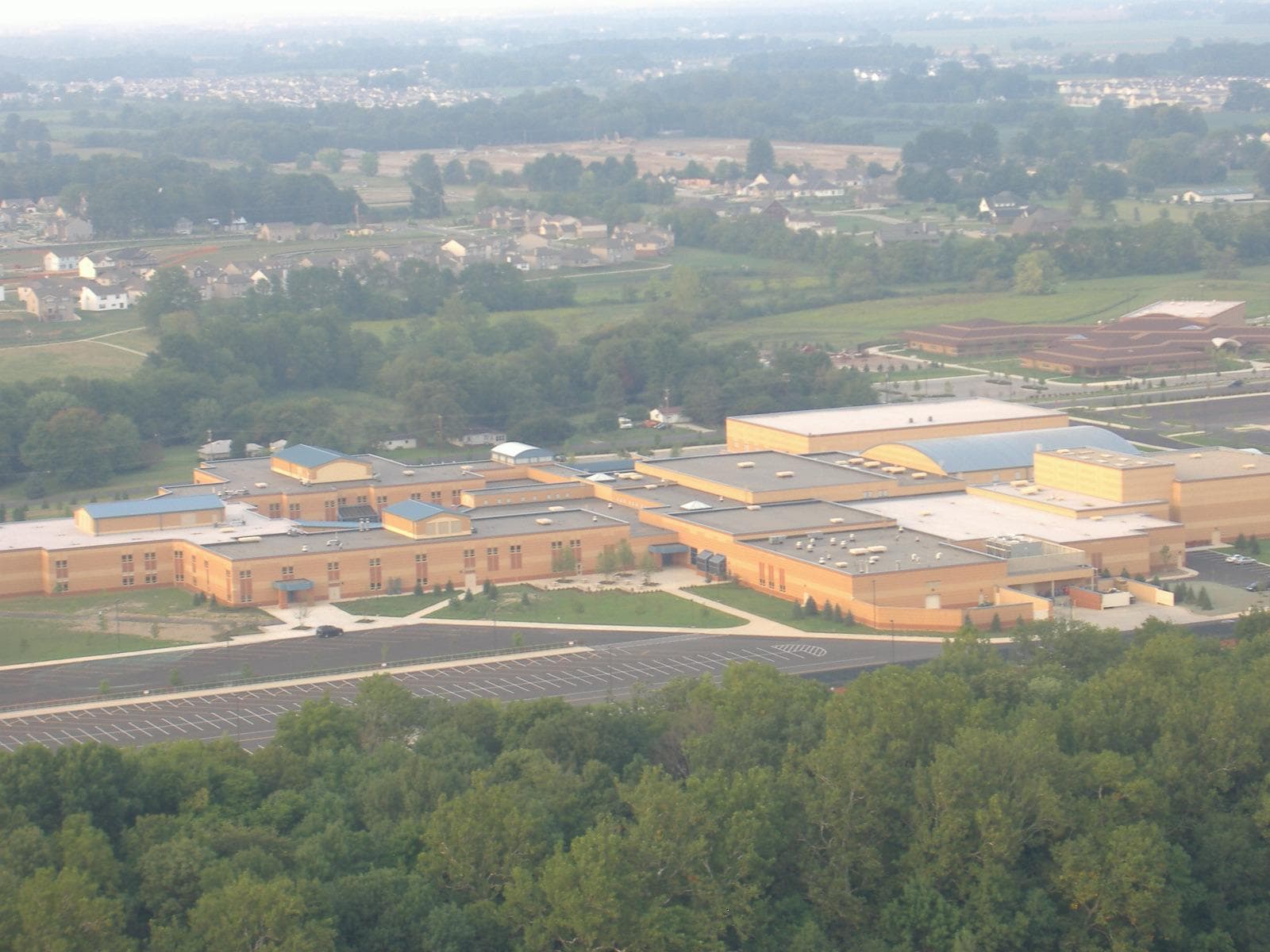
- Local poverty rate in 2023: 3.6%
- Median household income in city: $128,141 ($49,603 more than national median)
- Bachelor’s degree attainment rate in city: 66.2% (31.2 ppts. higher than comparable national rate)
- Five-year avg. unemployment rate in city: 2.8% (2.4 ppts. lower than national jobless rate)
- City population: 100,918
13. Eastvale, California
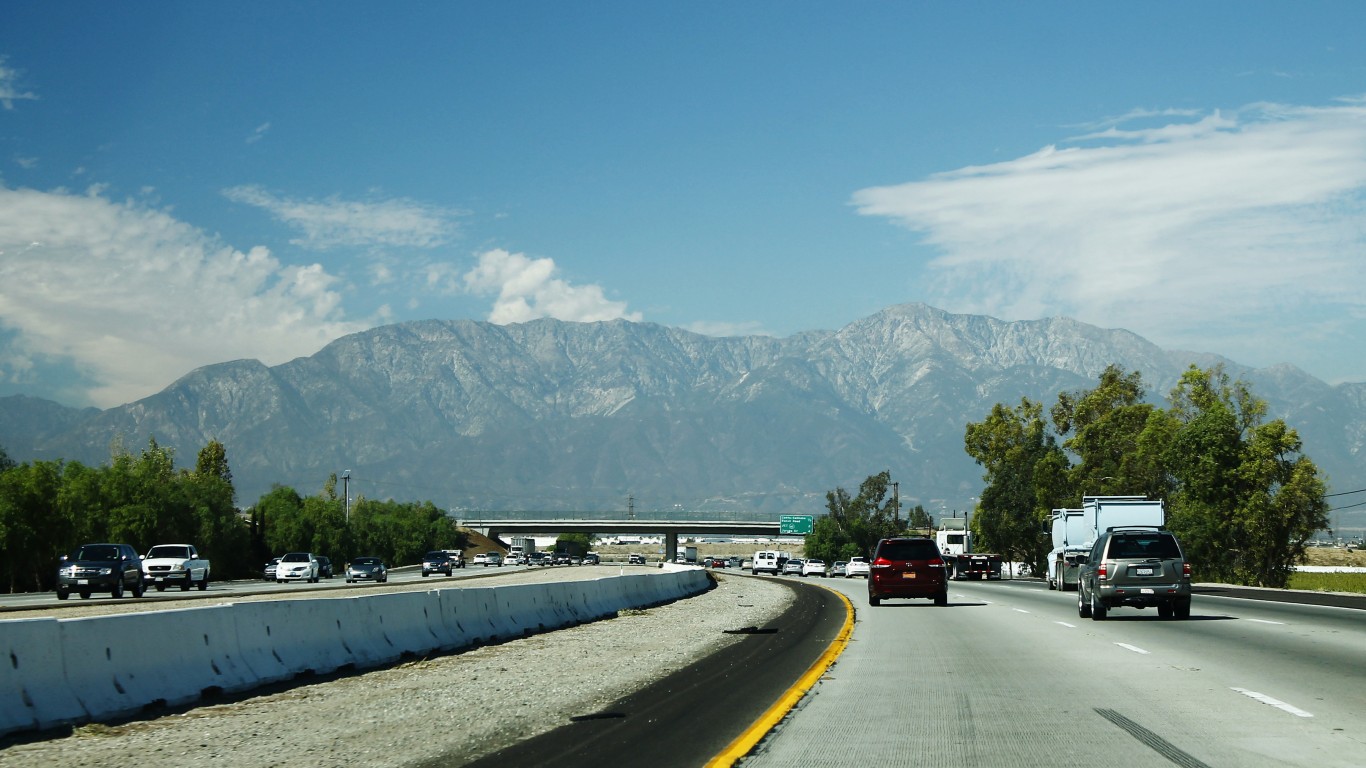
- Local poverty rate in 2023: 3.6%
- Median household income in city: $161,322 ($82,784 more than national median)
- Bachelor’s degree attainment rate in city: 42.3% (7.3 ppts. higher than comparable national rate)
- Five-year avg. unemployment rate in city: 4.7% (0.5 ppts. lower than national jobless rate)
- City population: 70,179
12. Ellicott City, Maryland

- Local poverty rate in 2023: 3.6%
- Median household income in city: $157,891 ($79,353 more than national median)
- Bachelor’s degree attainment rate in city: 69.6% (34.6 ppts. higher than comparable national rate)
- Five-year avg. unemployment rate in city: 2.9% (2.3 ppts. lower than national jobless rate)
- City population: 73,737
11. Frisco, Texas
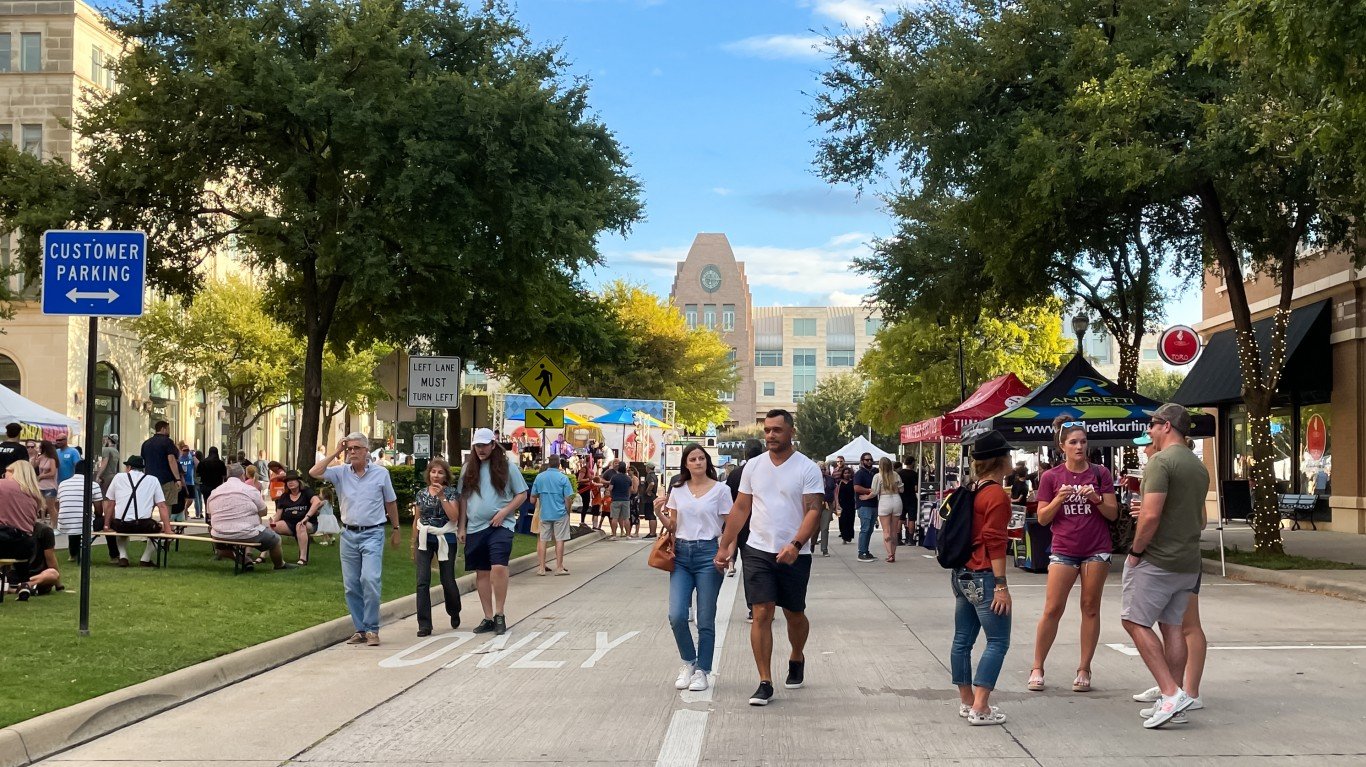
- Local poverty rate in 2023: 3.5%
- Median household income in city: $146,158 ($67,620 more than national median)
- Bachelor’s degree attainment rate in city: 66.0% (31.0 ppts. higher than comparable national rate)
- Five-year avg. unemployment rate in city: 4.2% (1 ppts. lower than national jobless rate)
- City population: 210,238
10. Huntersville, North Carolina

- Local poverty rate in 2023: 3.4%
- Median household income in city: $119,951 ($41,413 more than national median)
- Bachelor’s degree attainment rate in city: 57.3% (22.3 ppts. higher than comparable national rate)
- Five-year avg. unemployment rate in city: 3.6% (1.6 ppts. lower than national jobless rate)
- City population: 62,458
9. Lakeville, Minnesota
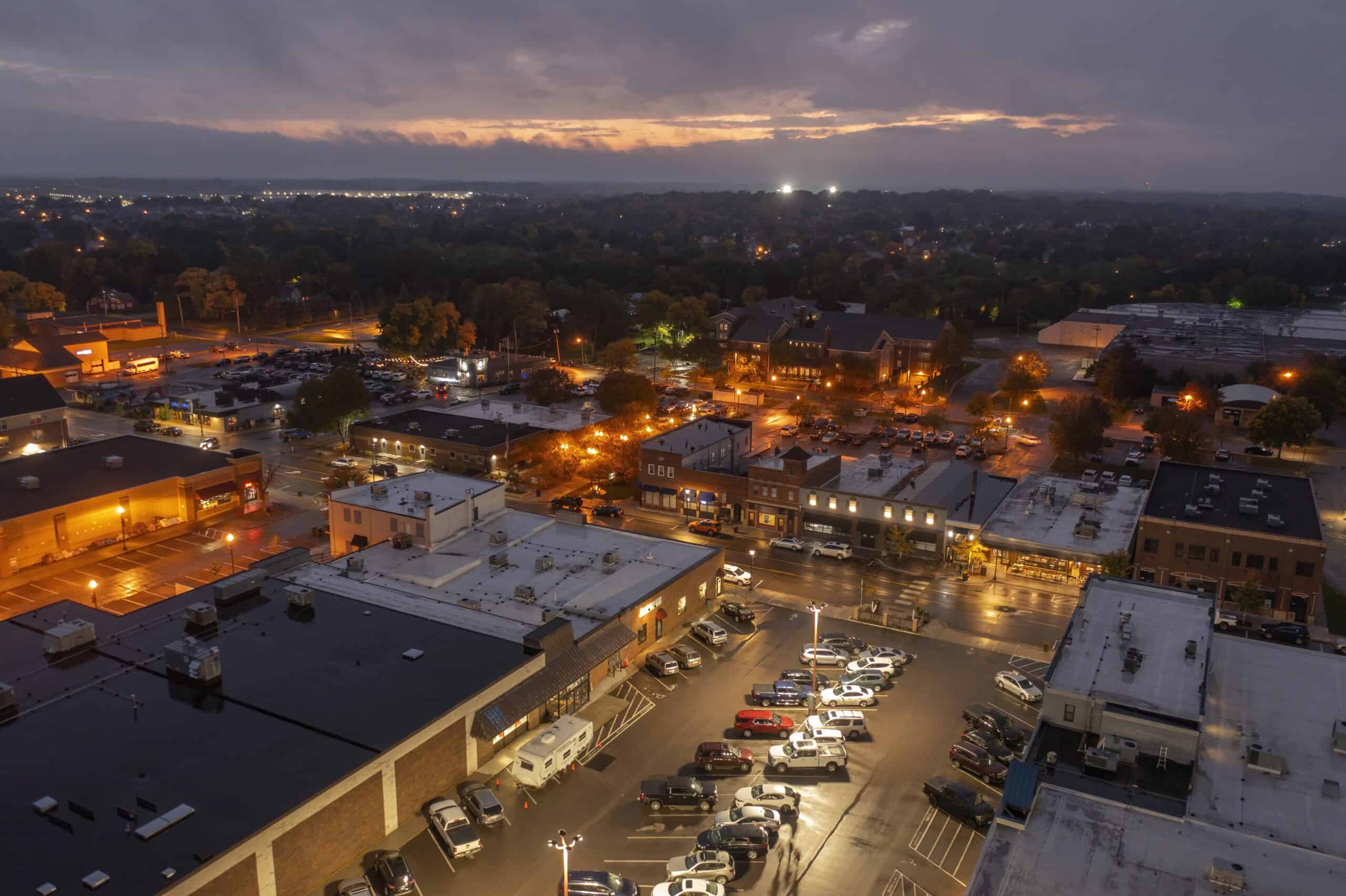
- Local poverty rate in 2023: 3.3%
- Median household income in city: $138,119 ($59,581 more than national median)
- Bachelor’s degree attainment rate in city: 50.9% (15.9 ppts. higher than comparable national rate)
- Five-year avg. unemployment rate in city: 2.3% (2.9 ppts. lower than national jobless rate)
- City population: 72,480
8. Parker, Colorado

- Local poverty rate in 2023: 3.2%
- Median household income in city: $129,342 ($50,804 more than national median)
- Bachelor’s degree attainment rate in city: 53.7% (18.7 ppts. higher than comparable national rate)
- Five-year avg. unemployment rate in city: 3% (2.2 ppts. lower than national jobless rate)
- City population: 60,115
7. Centennial, Colorado
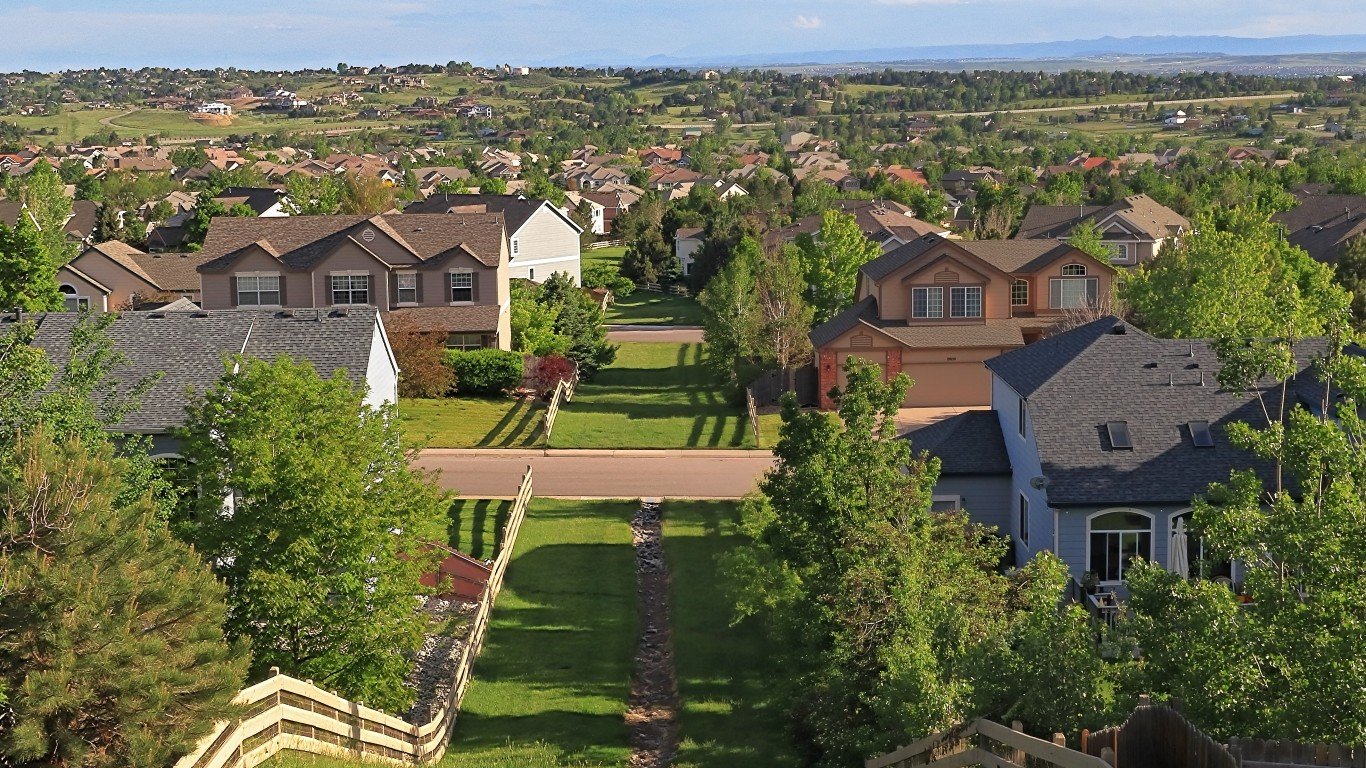
- Local poverty rate in 2023: 3.1%
- Median household income in city: $128,167 ($49,629 more than national median)
- Bachelor’s degree attainment rate in city: 61.9% (26.9 ppts. higher than comparable national rate)
- Five-year avg. unemployment rate in city: 3.7% (1.5 ppts. lower than national jobless rate)
- City population: 107,386
6. Wake Forest, North Carolina
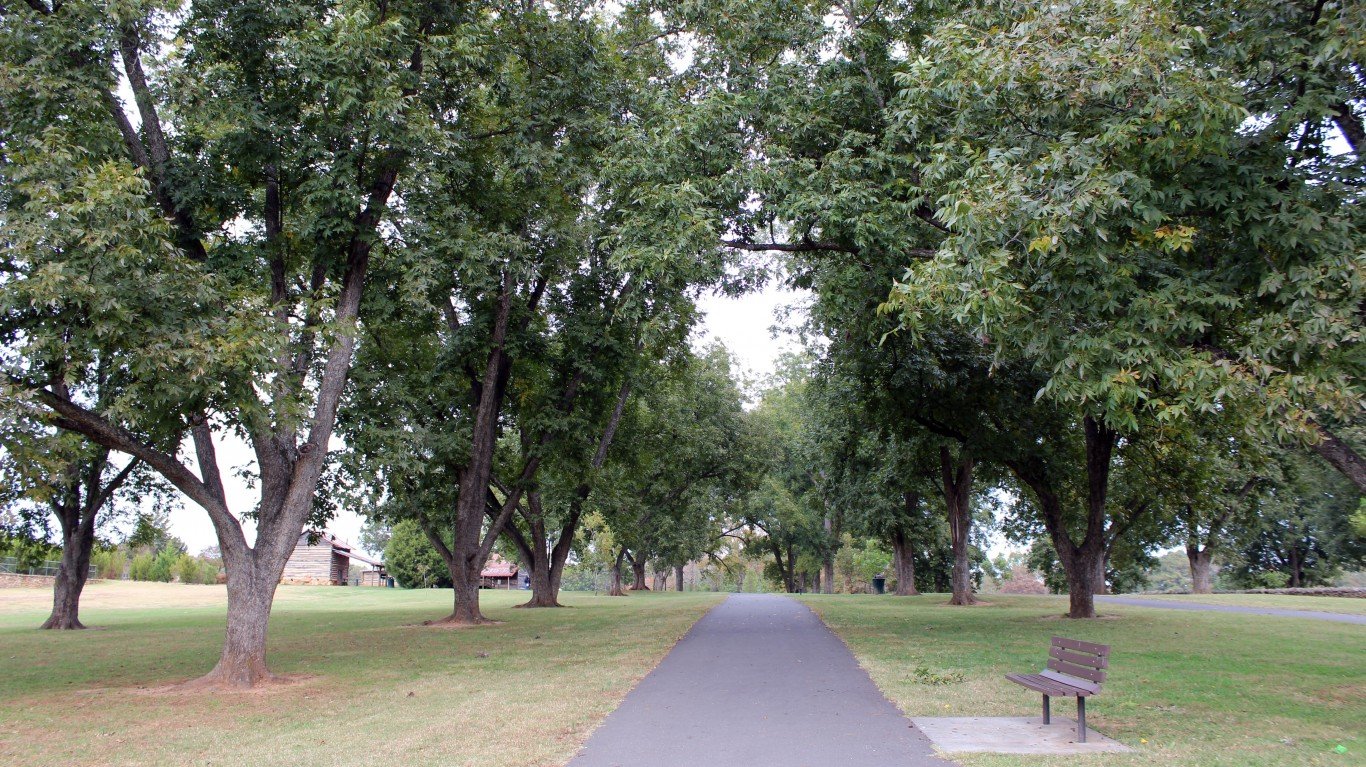
- Local poverty rate in 2023: 2.9%
- Median household income in city: $120,777 ($42,239 more than national median)
- Bachelor’s degree attainment rate in city: 57.8% (22.8 ppts. higher than comparable national rate)
- Five-year avg. unemployment rate in city: 4.5% (0.7 ppts. lower than national jobless rate)
- City population: 51,199
5. South Jordan, Utah
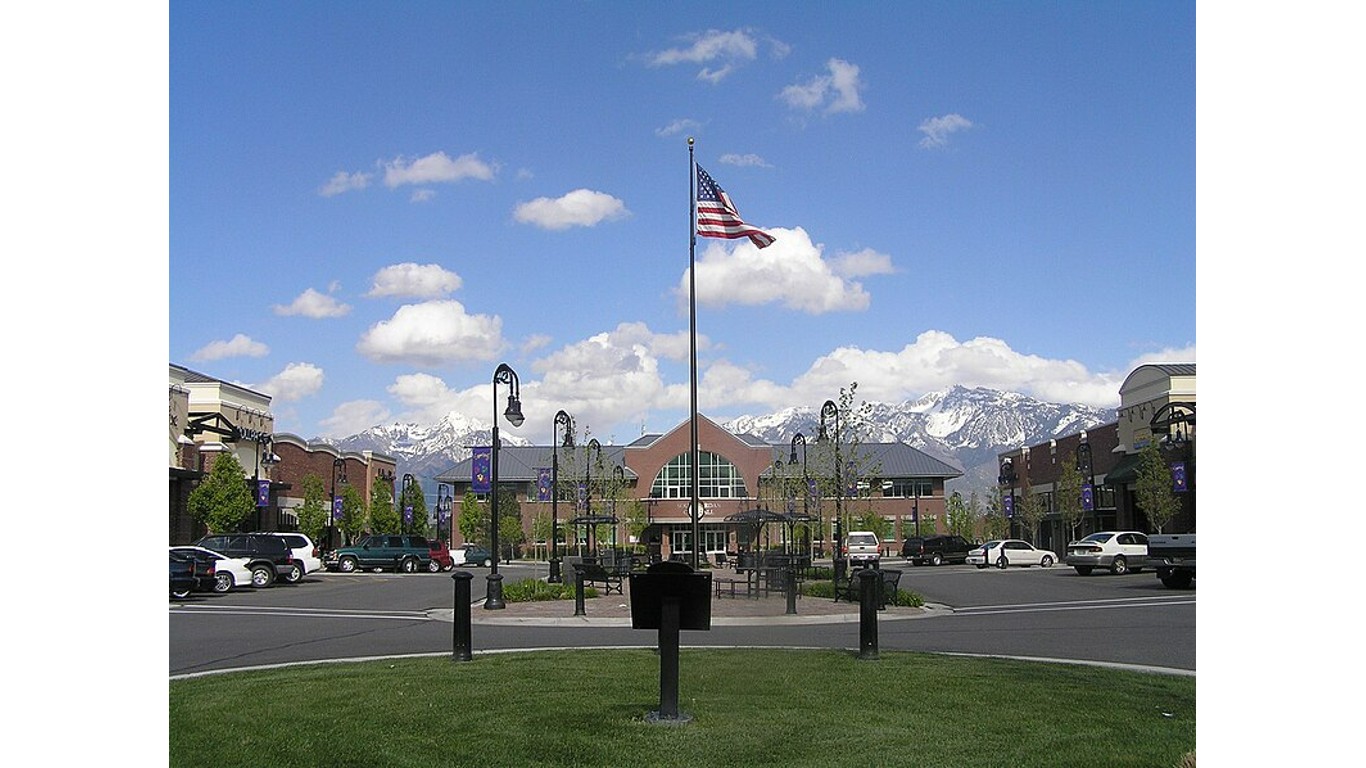
- Local poverty rate in 2023: 2.9%
- Median household income in city: $126,400 ($47,862 more than national median)
- Bachelor’s degree attainment rate in city: 46.5% (11.5 ppts. higher than comparable national rate)
- Five-year avg. unemployment rate in city: 2.2% (3 ppts. lower than national jobless rate)
- City population: 80,331
4. McLean, Virginia

- Local poverty rate in 2023: 2.7%
- Median household income in city: $flag ($171,462 less than national median)
- Bachelor’s degree attainment rate in city: 85.1% (50.1 ppts. higher than comparable national rate)
- Five-year avg. unemployment rate in city: 2.2% (3 ppts. lower than national jobless rate)
- City population: 50,232
3. Collierville, Tennessee

- Local poverty rate in 2023: 2.6%
- Median household income in city: $134,319 ($55,781 more than national median)
- Bachelor’s degree attainment rate in city: 60.6% (25.6 ppts. higher than comparable national rate)
- Five-year avg. unemployment rate in city: 3.1% (2.1 ppts. lower than national jobless rate)
- City population: 51,212
2. Apex, North Carolina
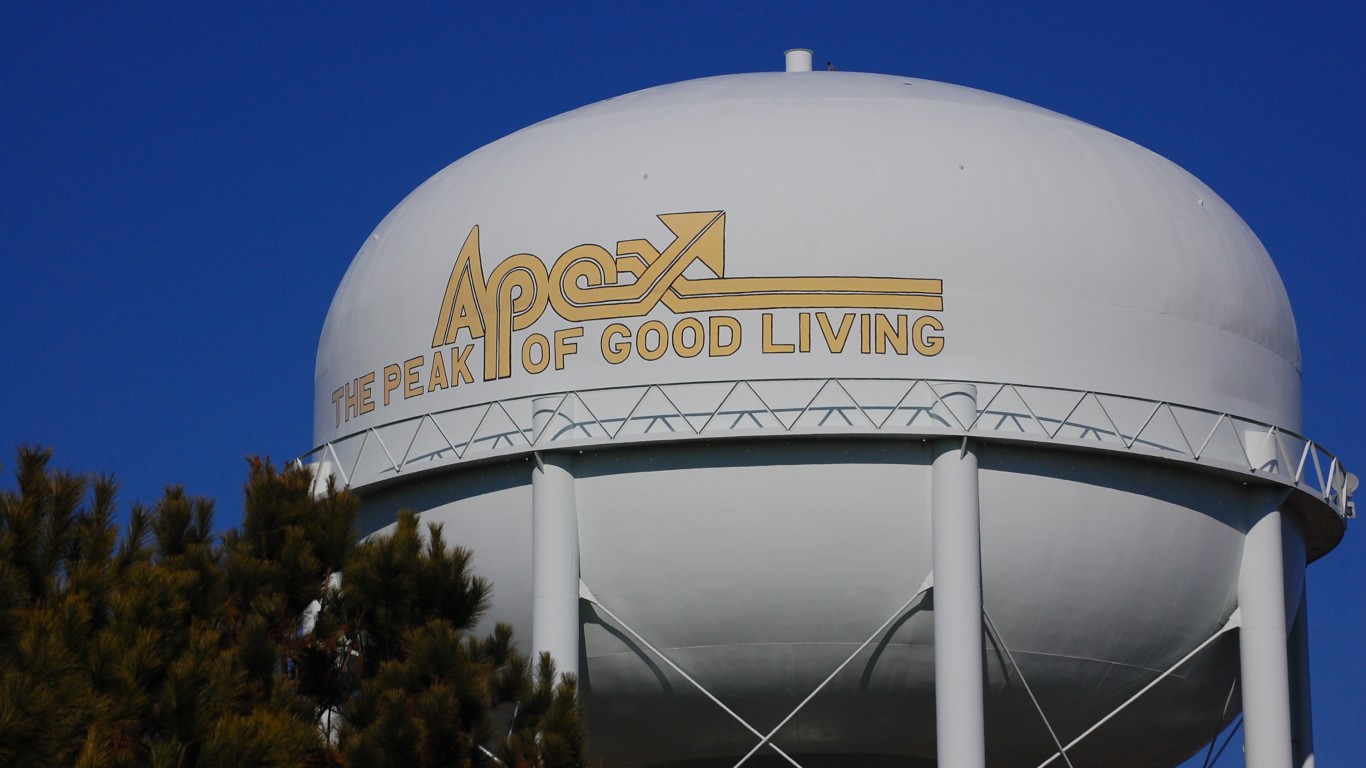
- Local poverty rate in 2023: 2.6%
- Median household income in city: $138,442 ($59,904 more than national median)
- Bachelor’s degree attainment rate in city: 66.6% (31.6 ppts. higher than comparable national rate)
- Five-year avg. unemployment rate in city: 3.8% (1.4 ppts. lower than national jobless rate)
- City population: 67,765
1. Highlands Ranch, Colorado

- Local poverty rate in 2023: 2.4%
- Median household income in city: $155,847 ($77,309 more than national median)
- Bachelor’s degree attainment rate in city: 66.8% (31.8 ppts. higher than comparable national rate)
- Five-year avg. unemployment rate in city: 3.7% (1.5 ppts. lower than national jobless rate)
- City population: 101,437
The post In This Beautiful American Town, Only 2.4% of the Population Lives in Poverty appeared first on 24/7 Wall St..



